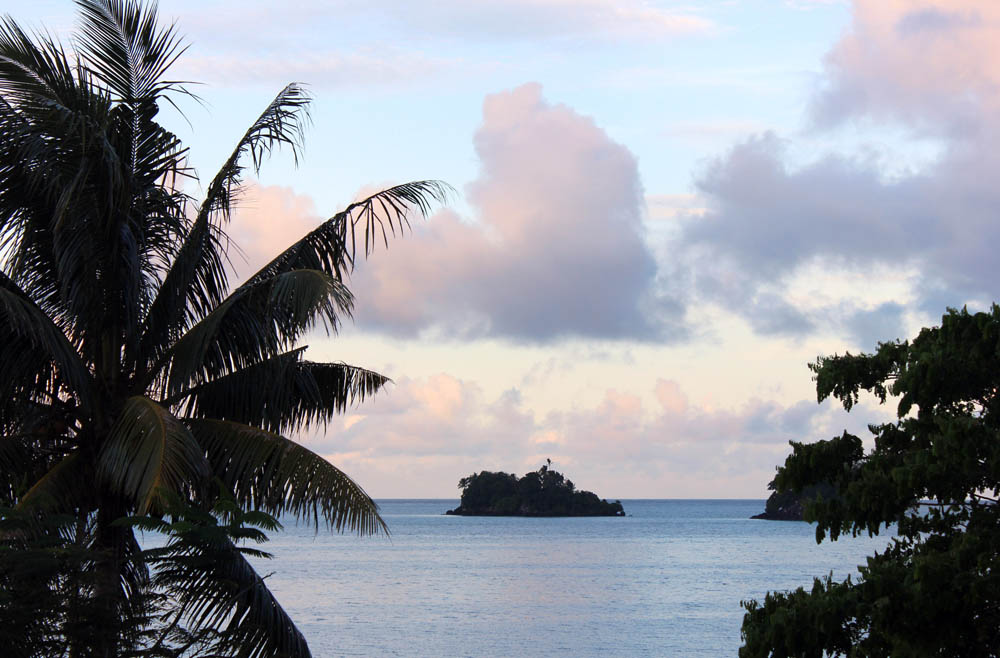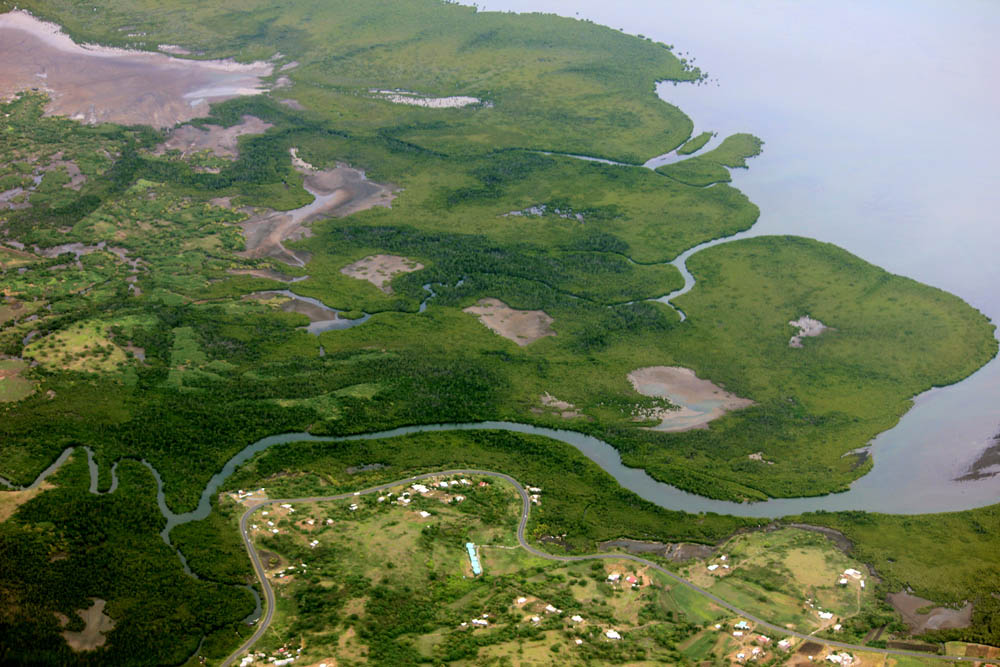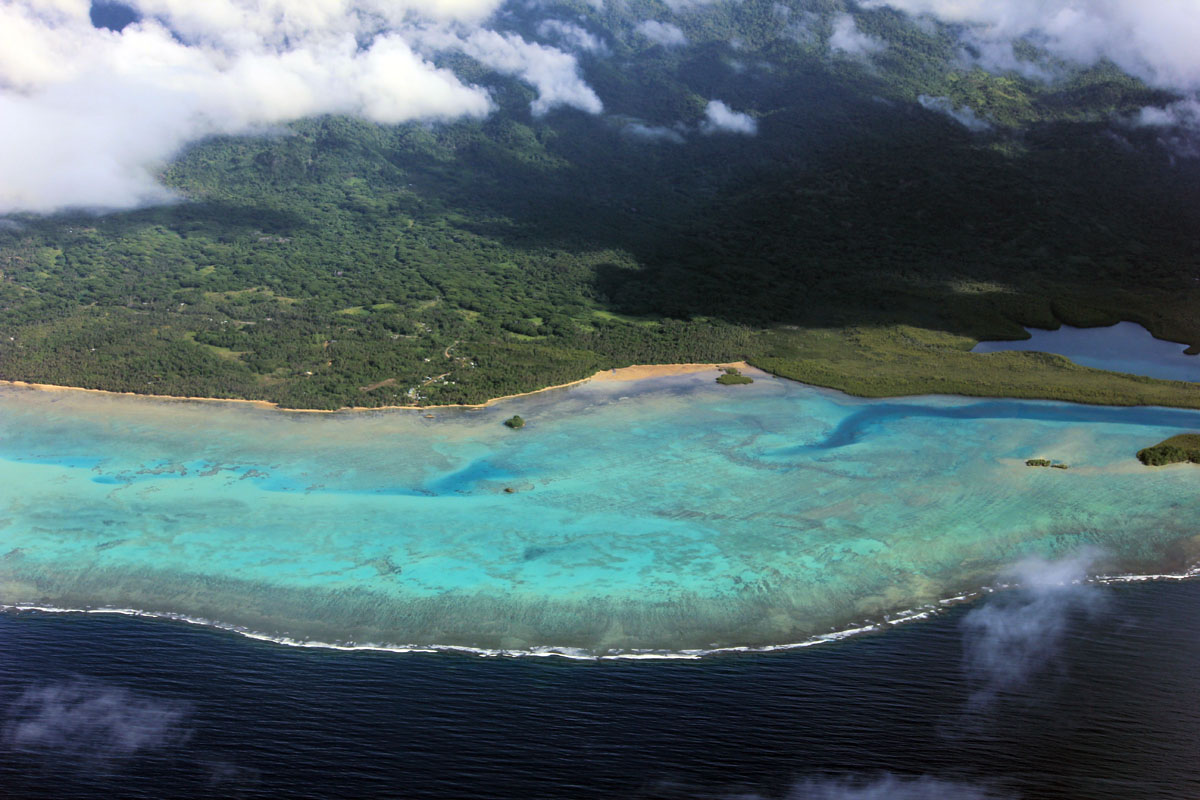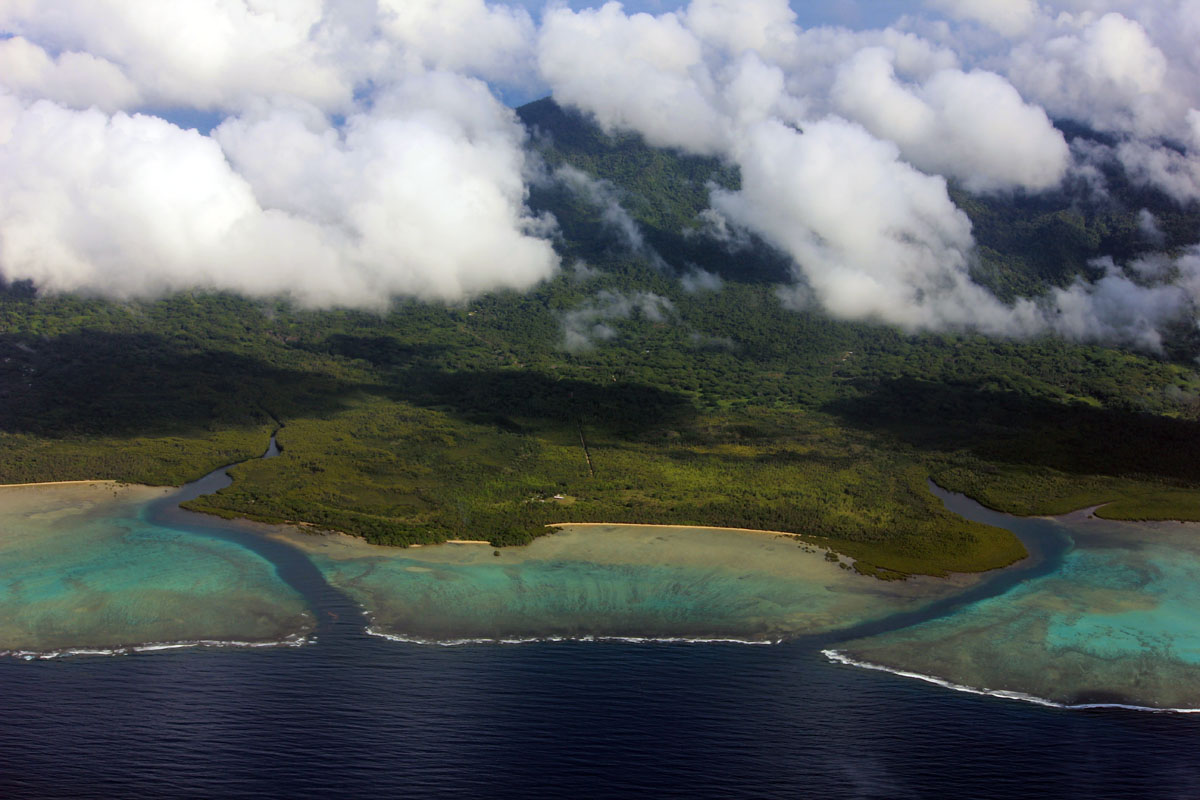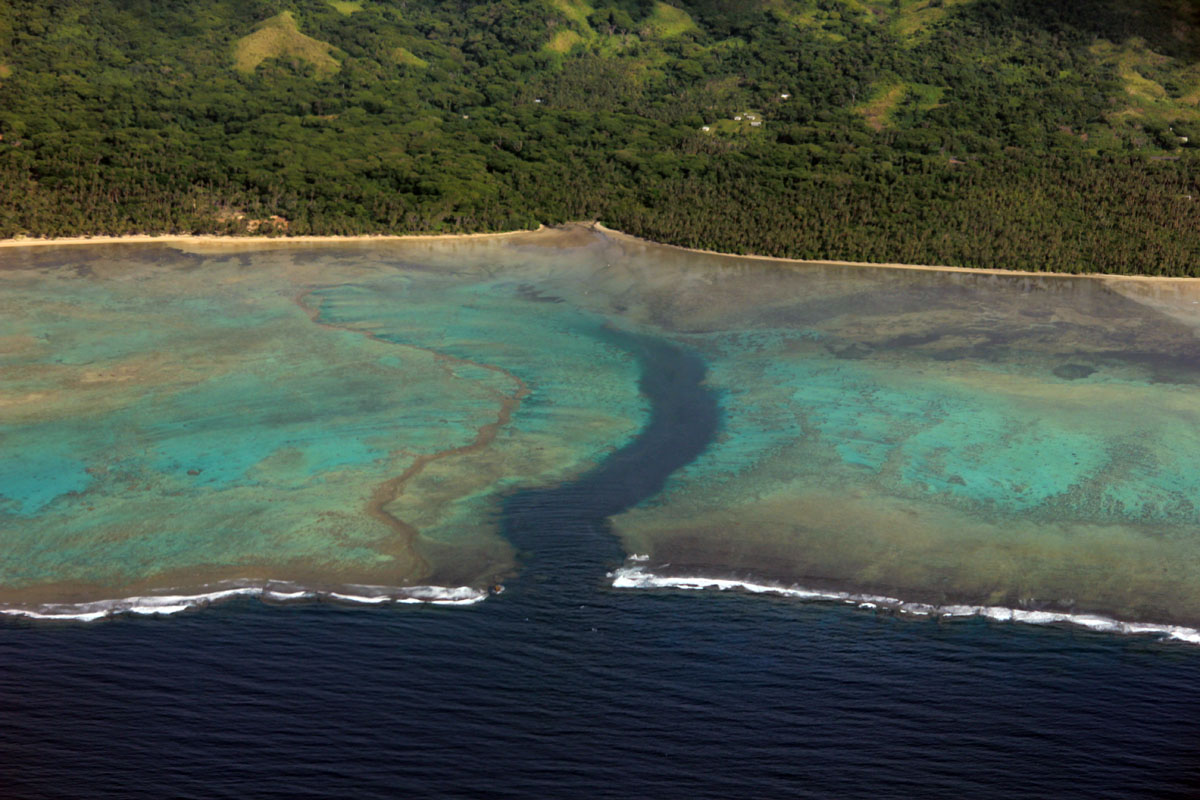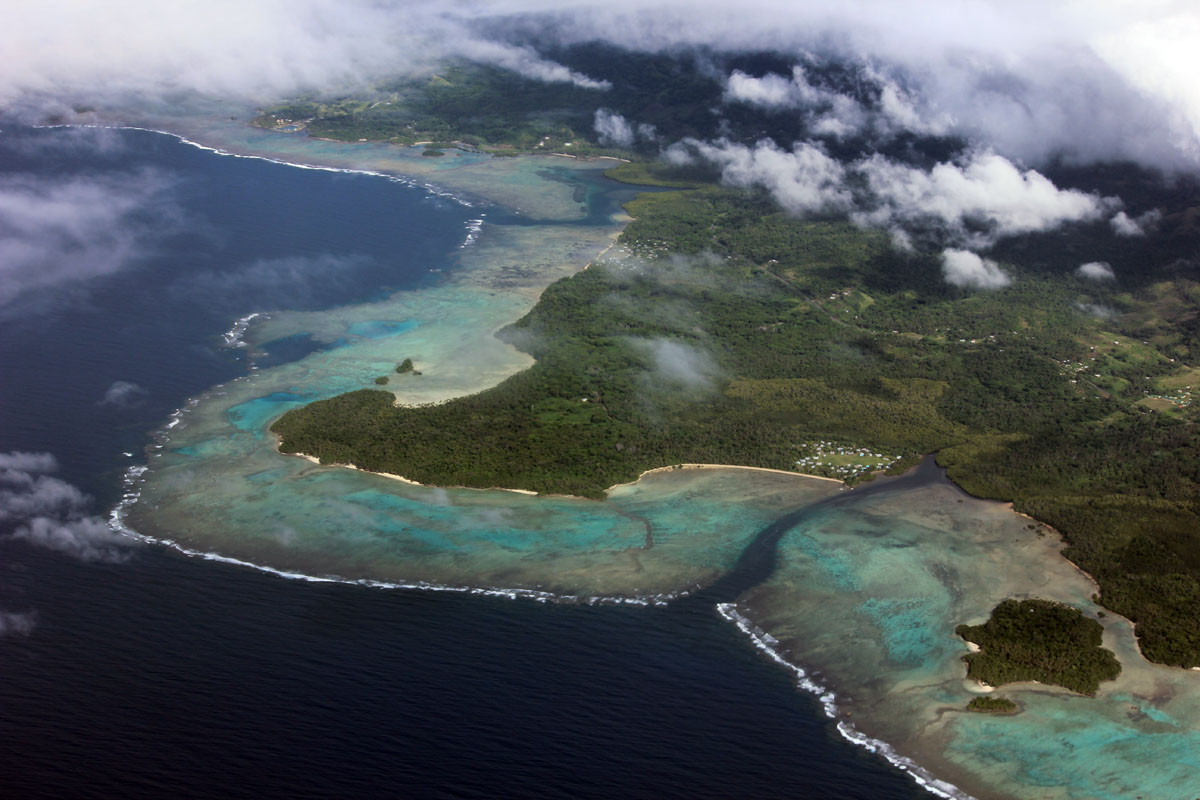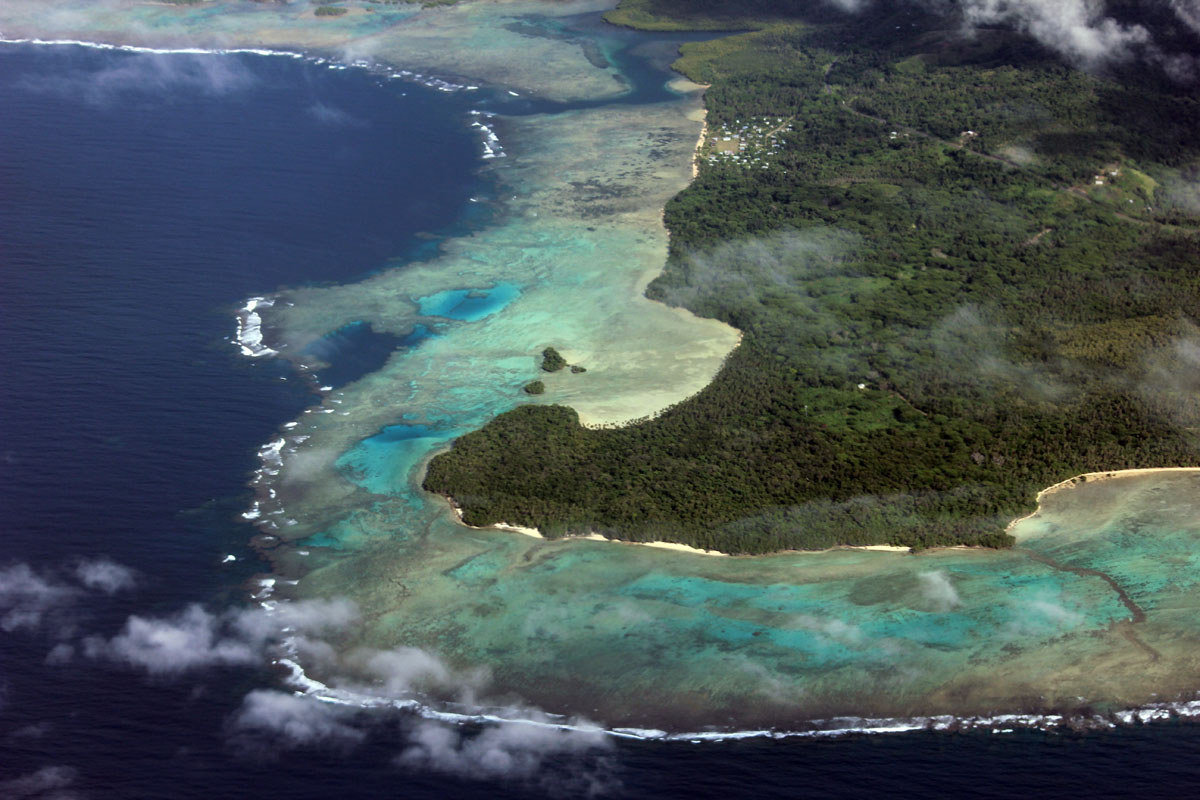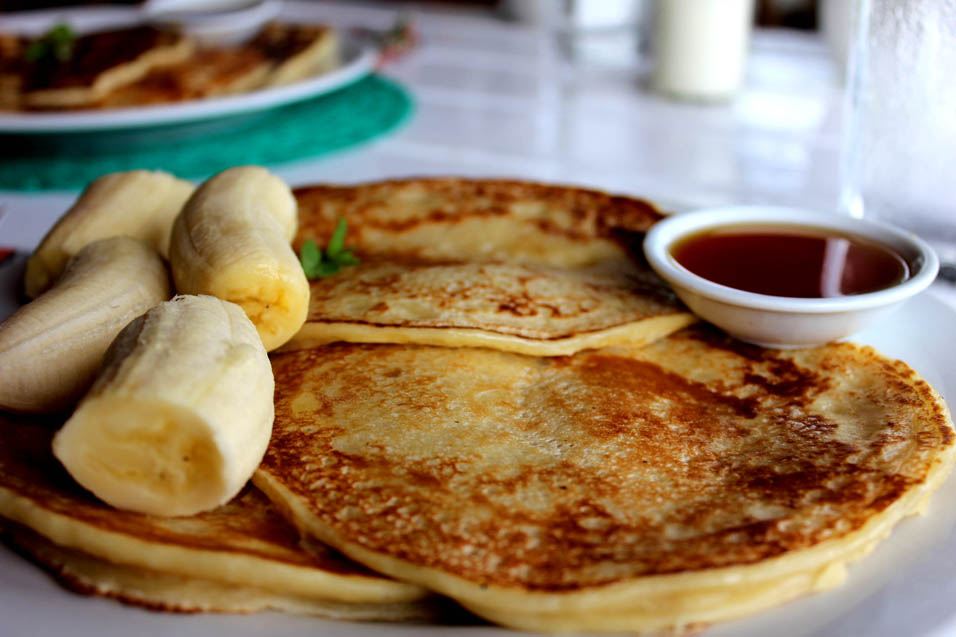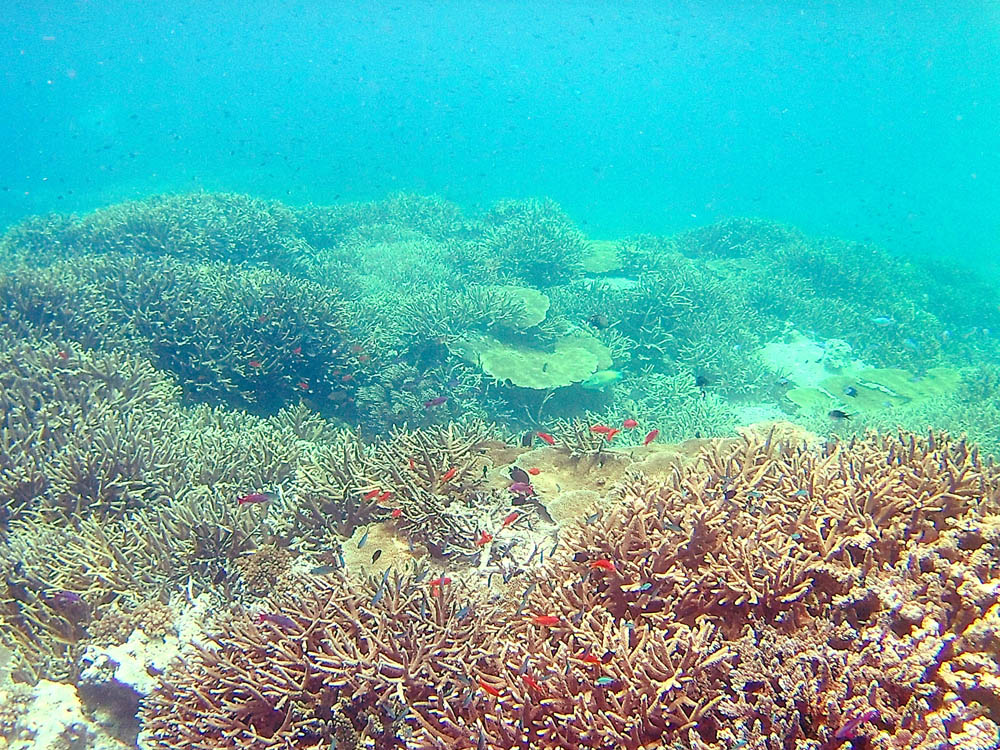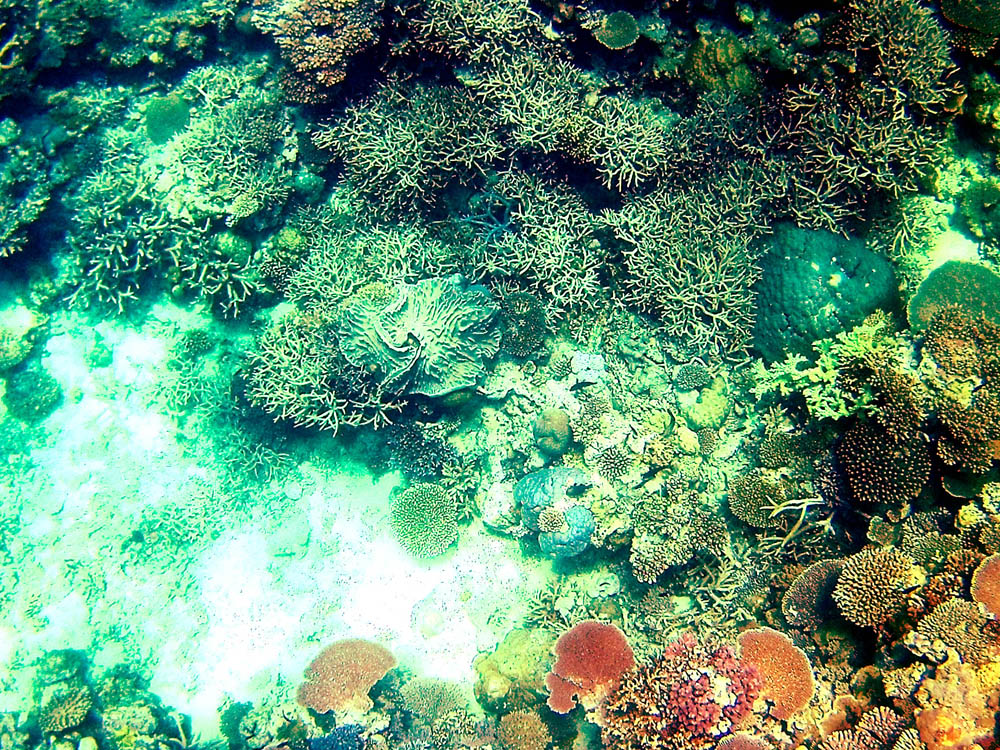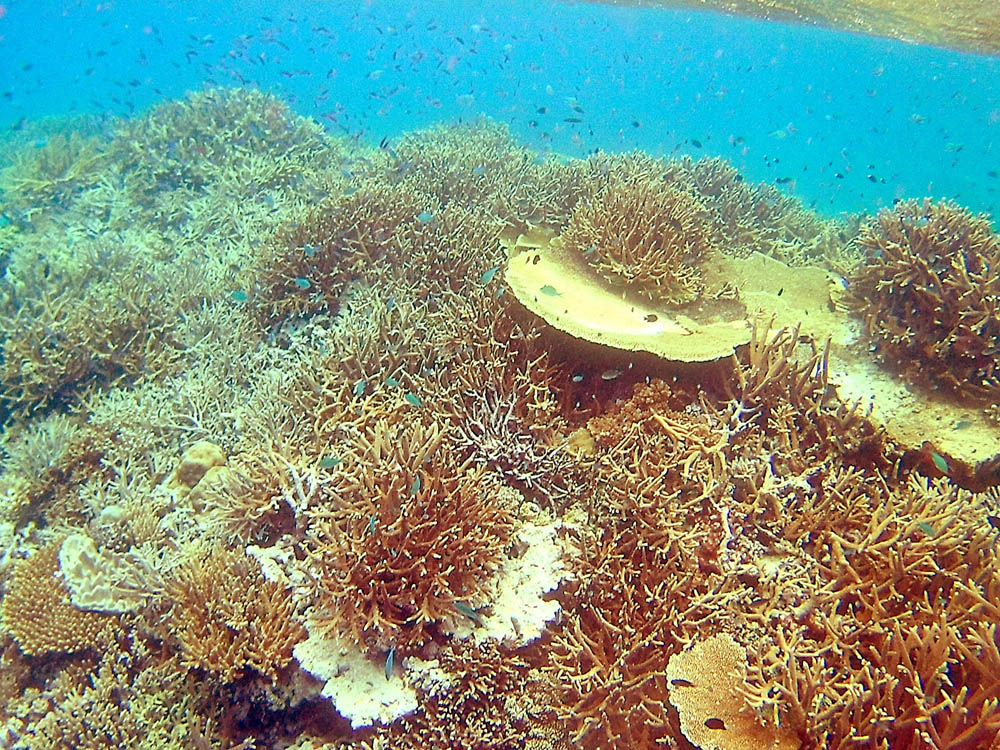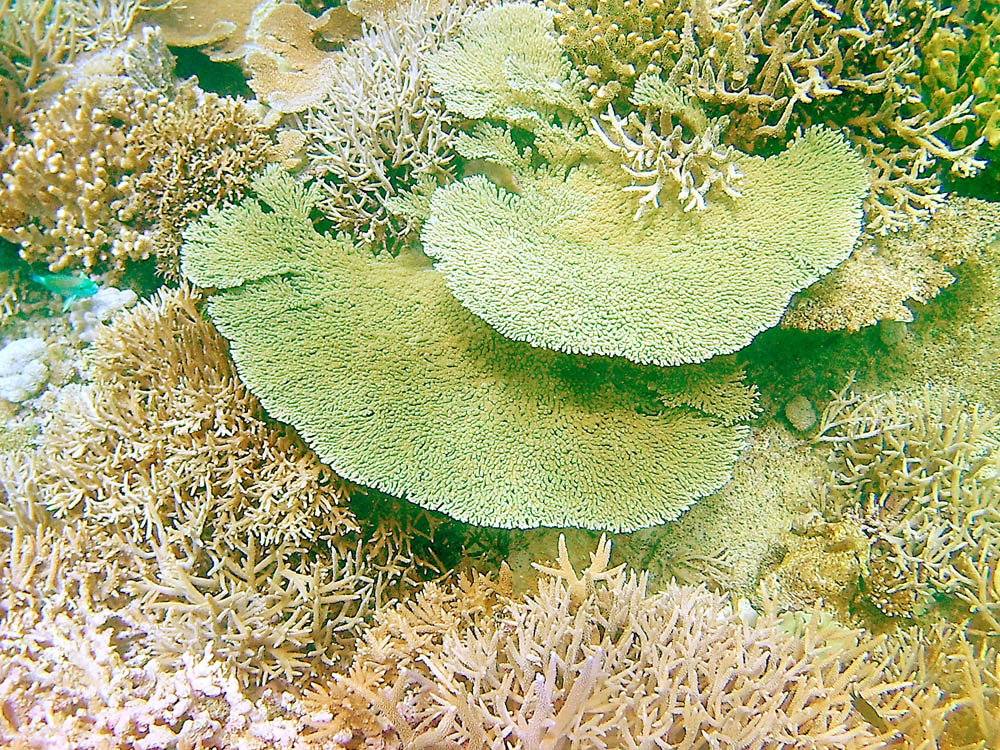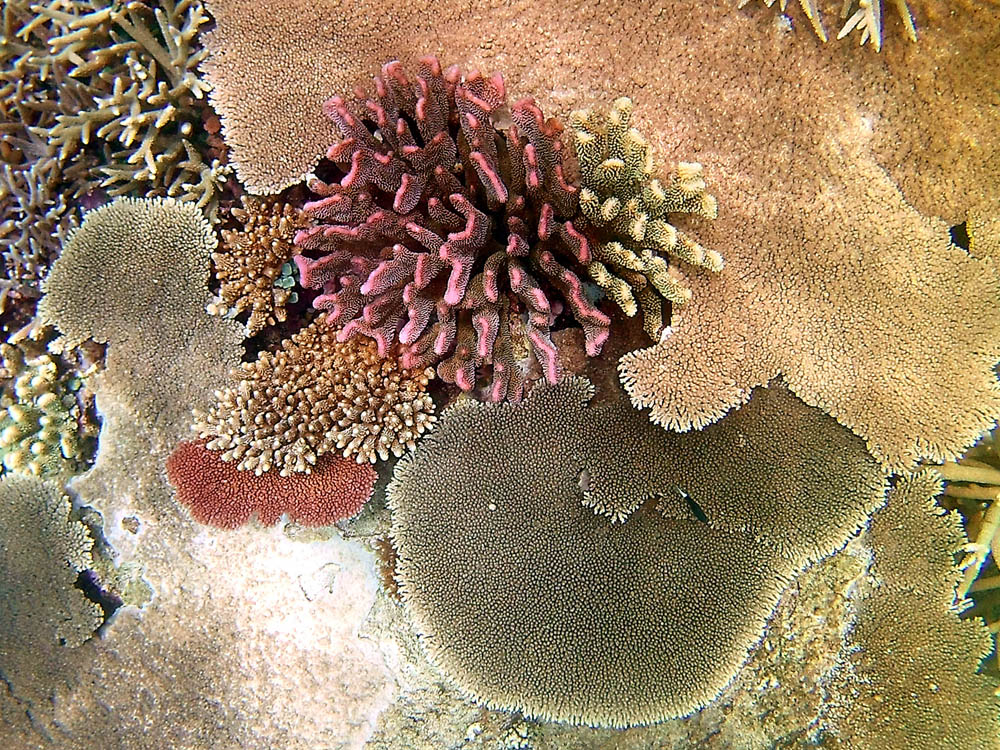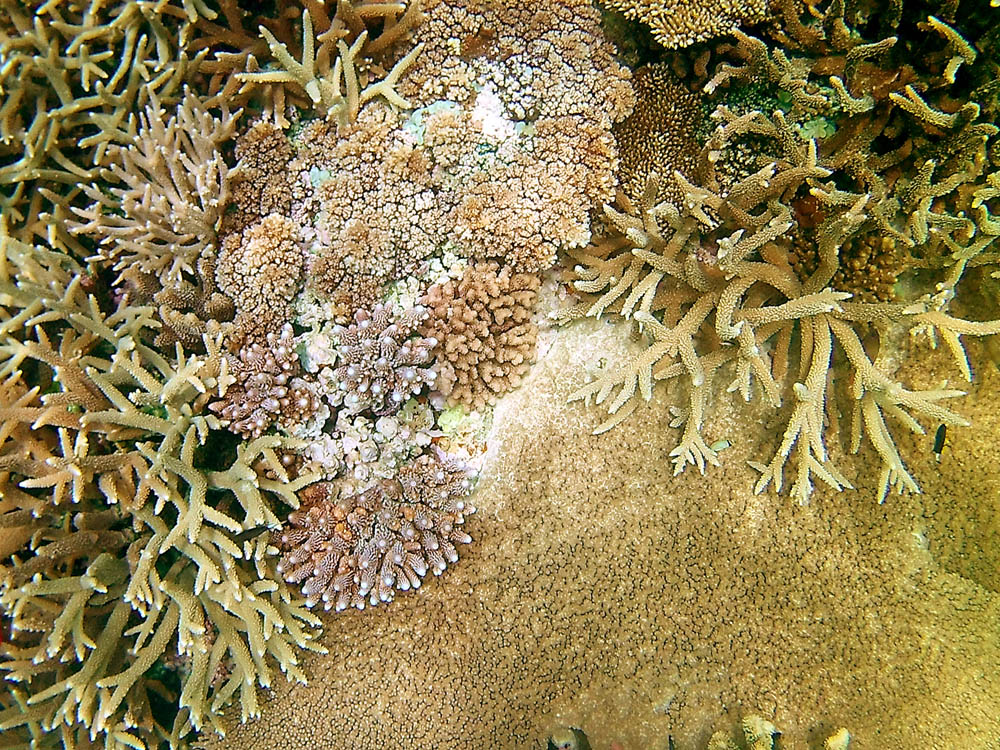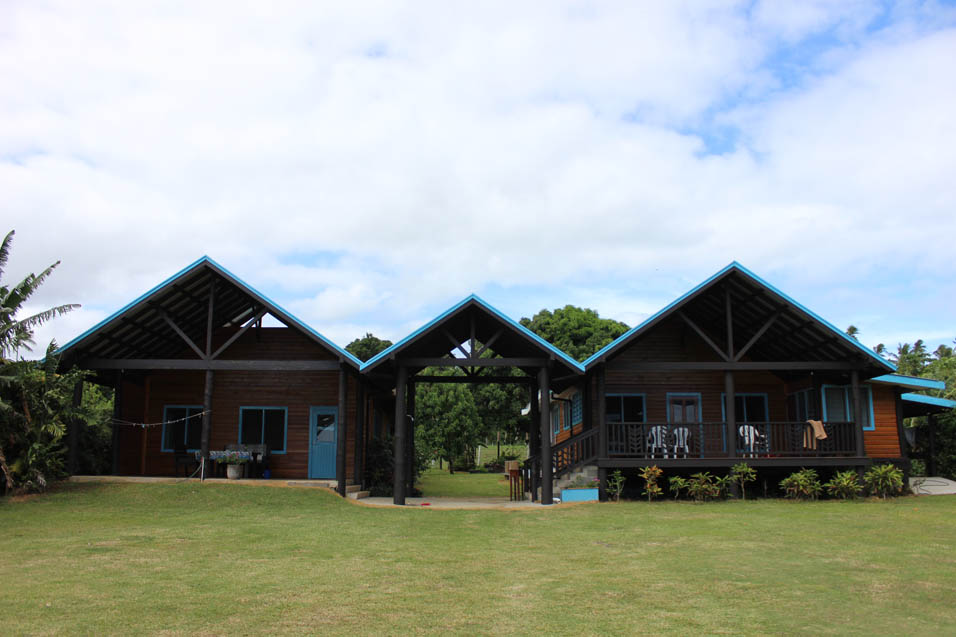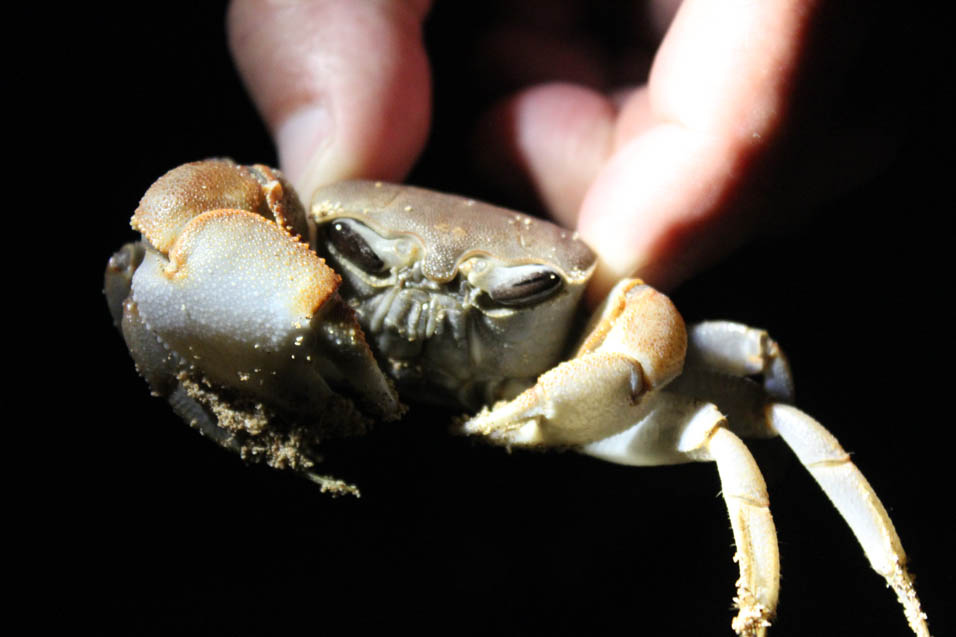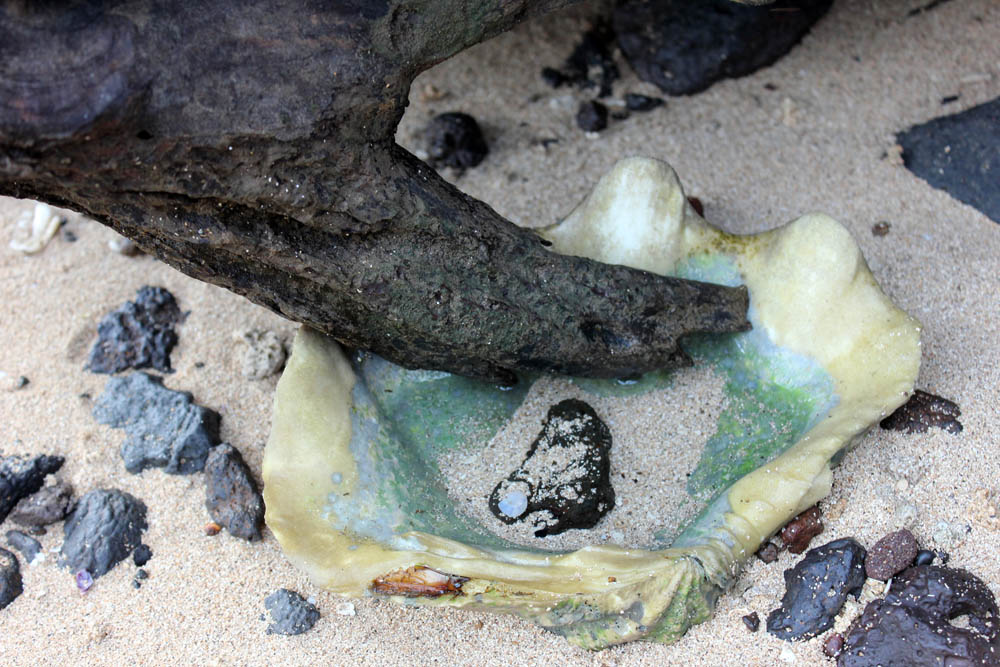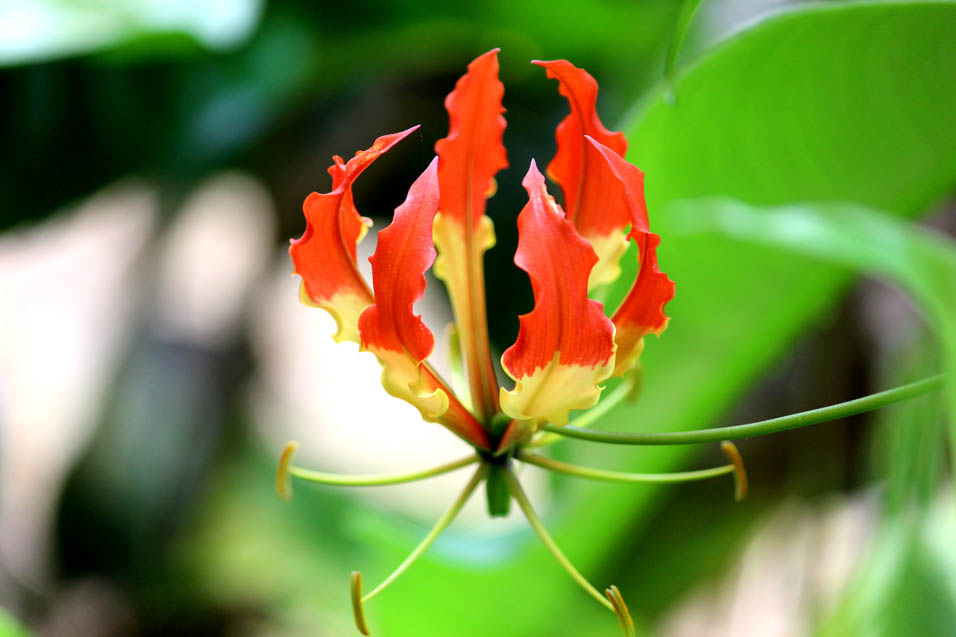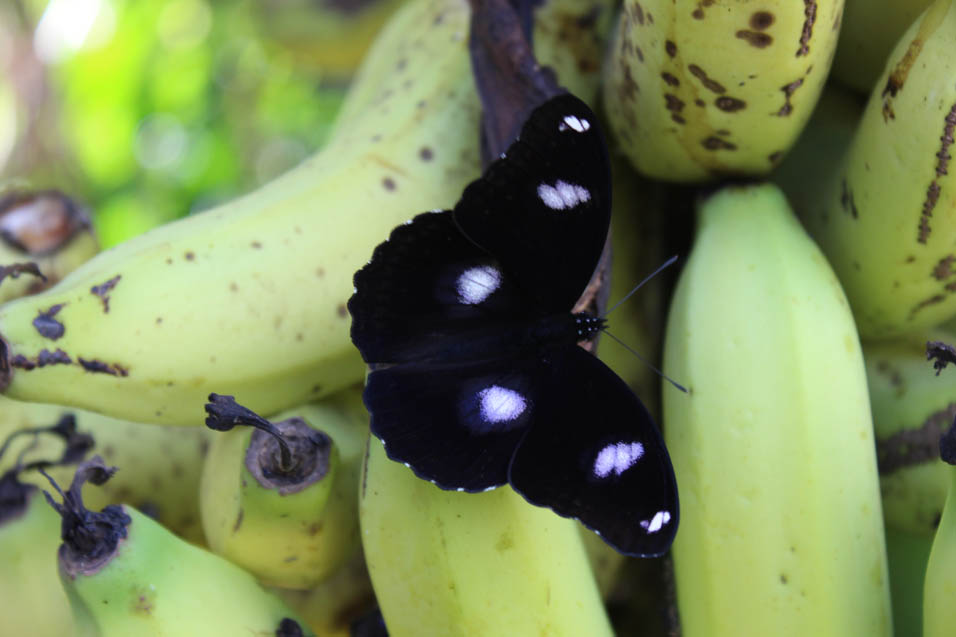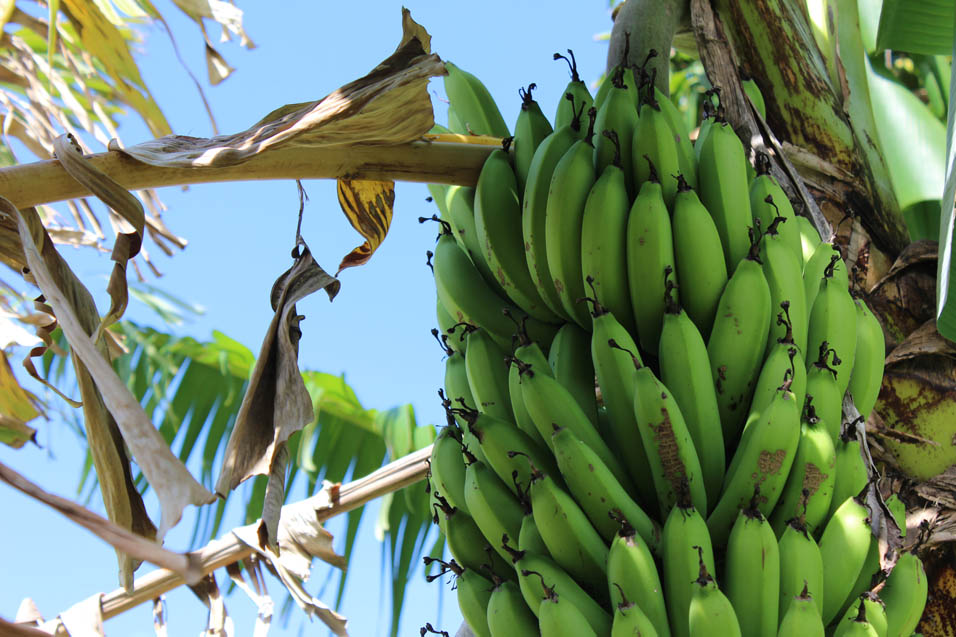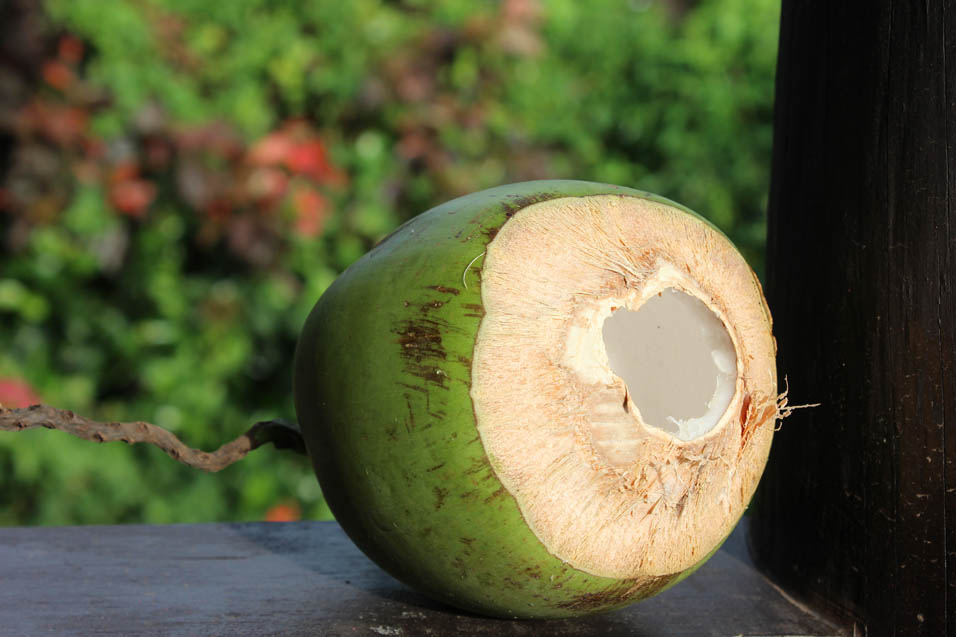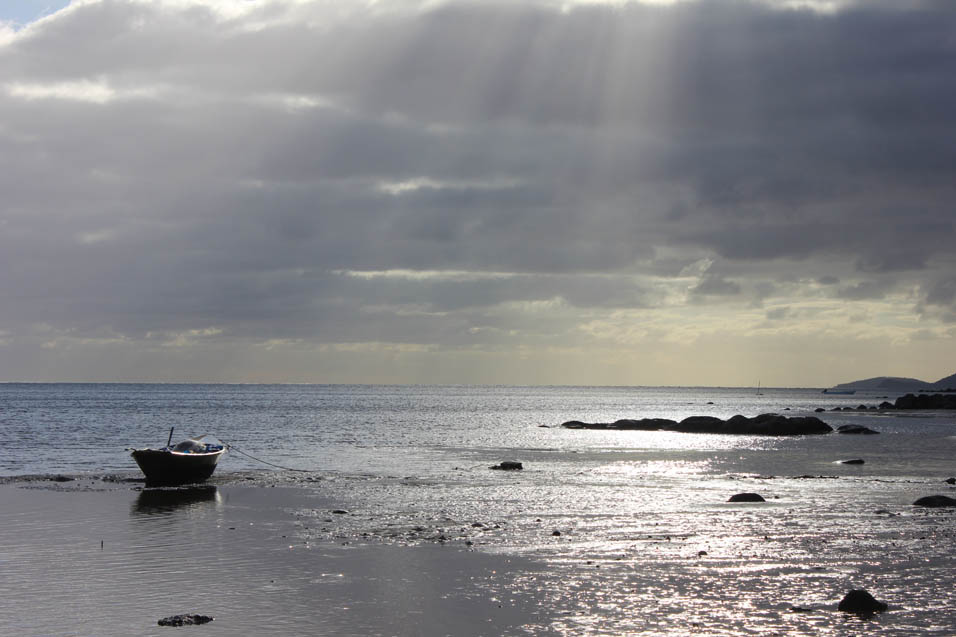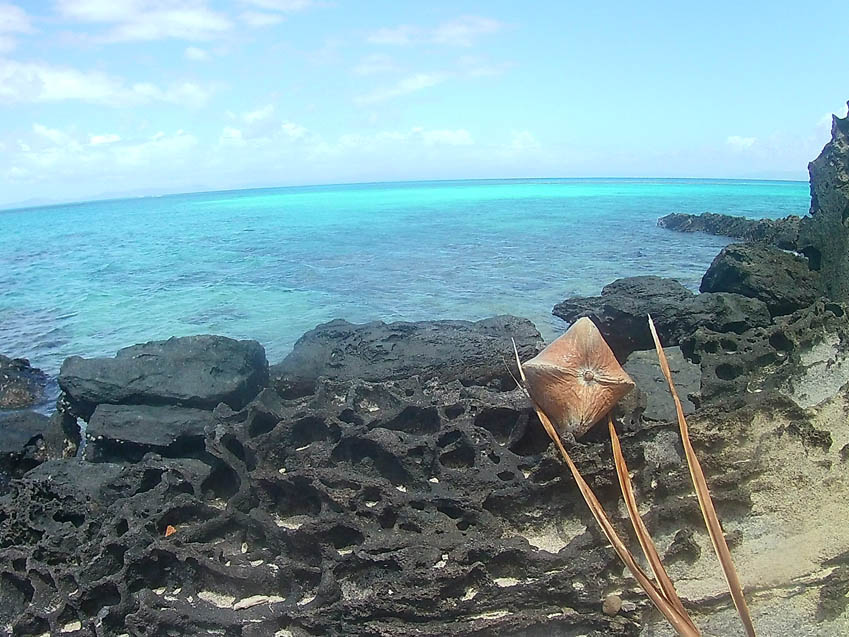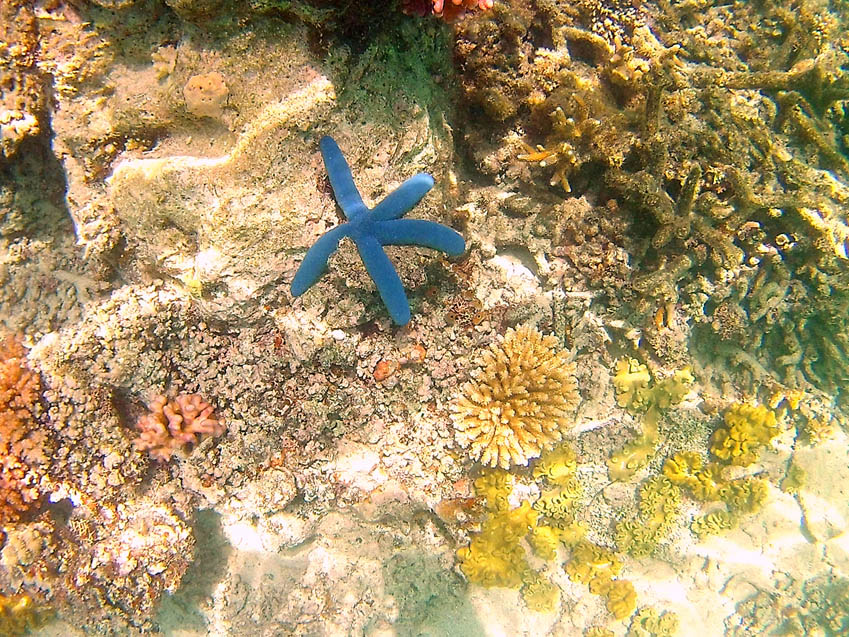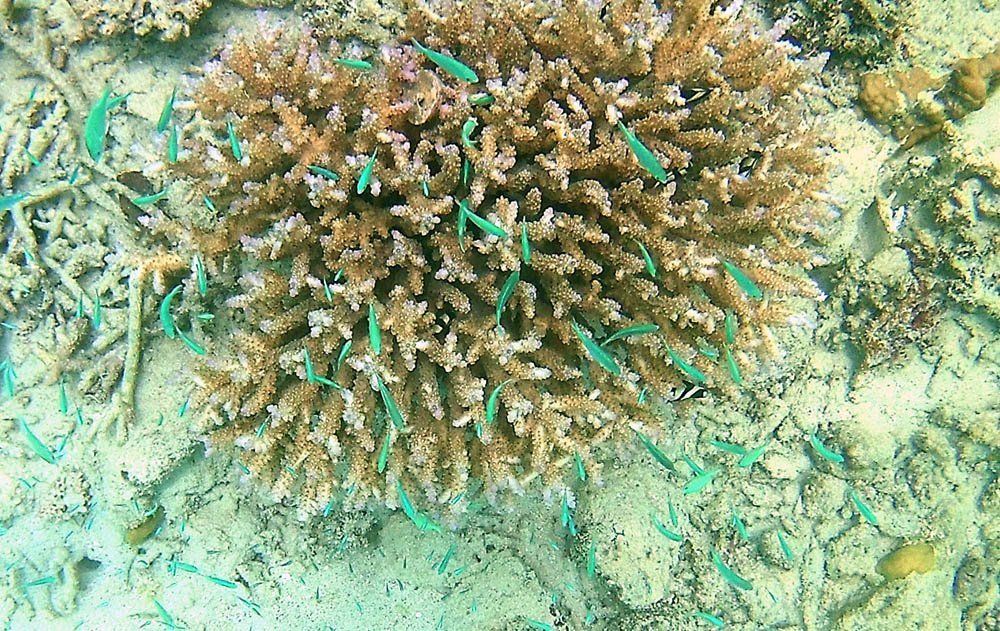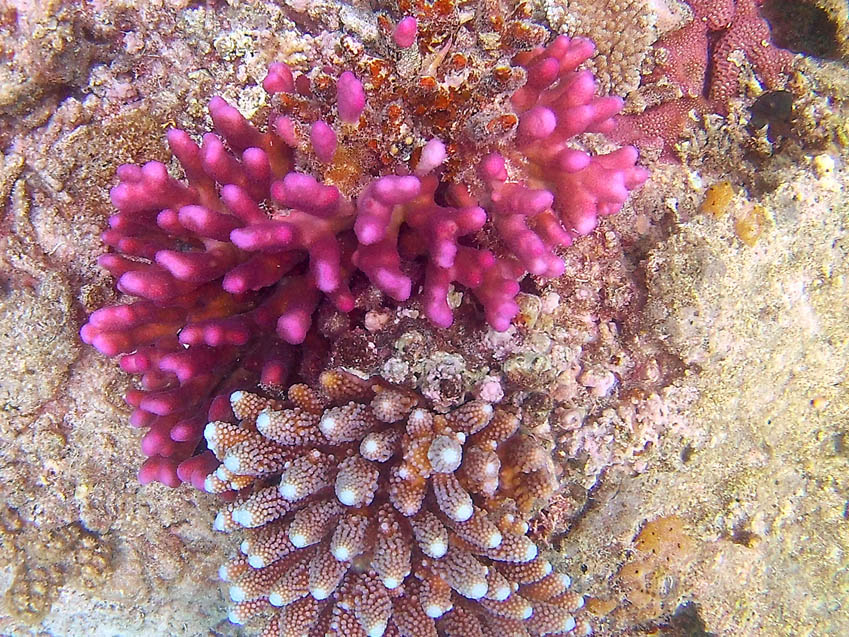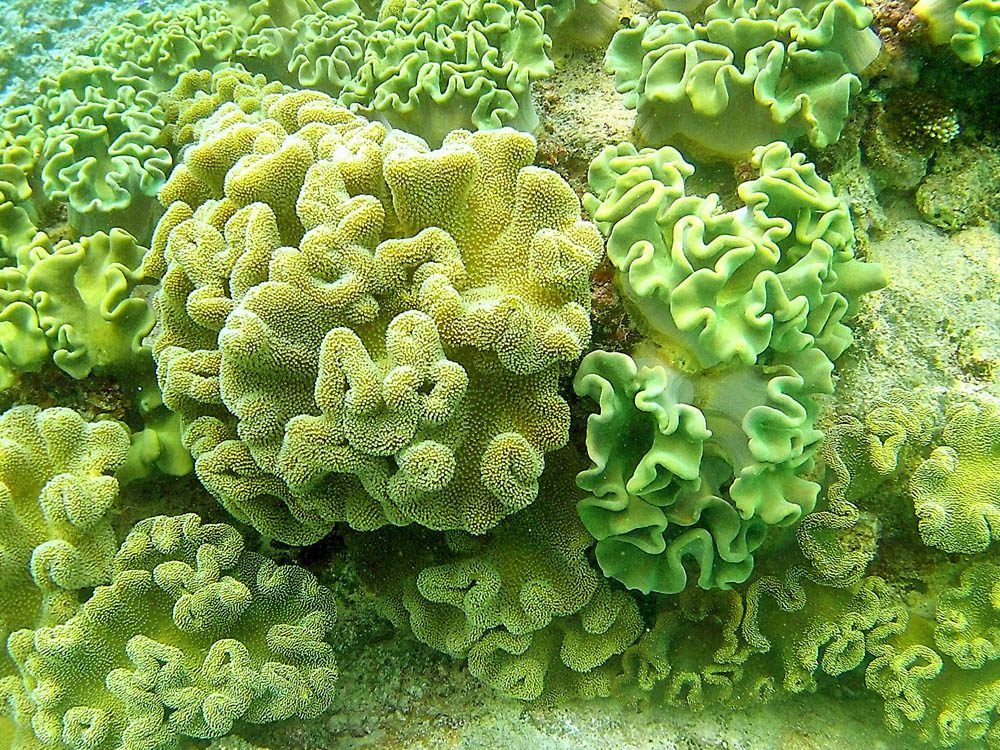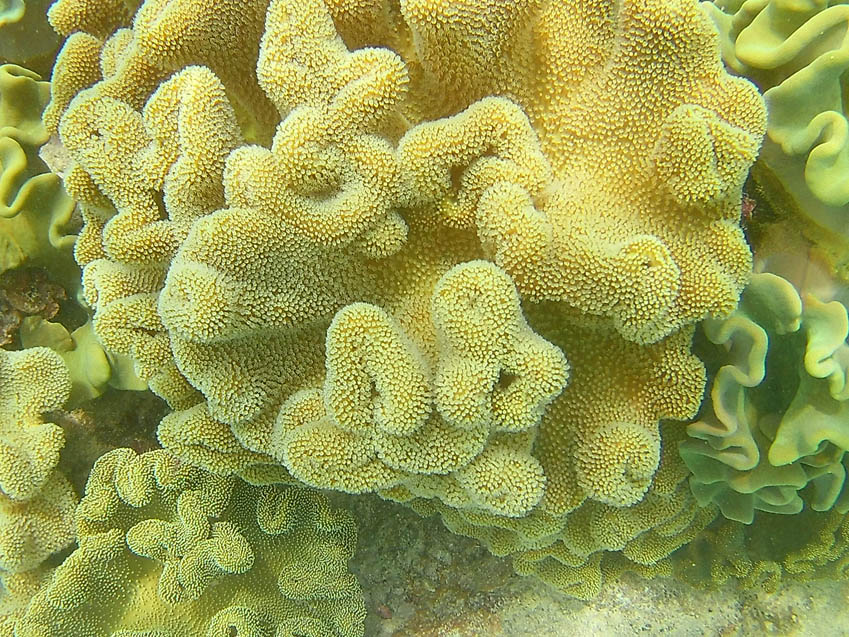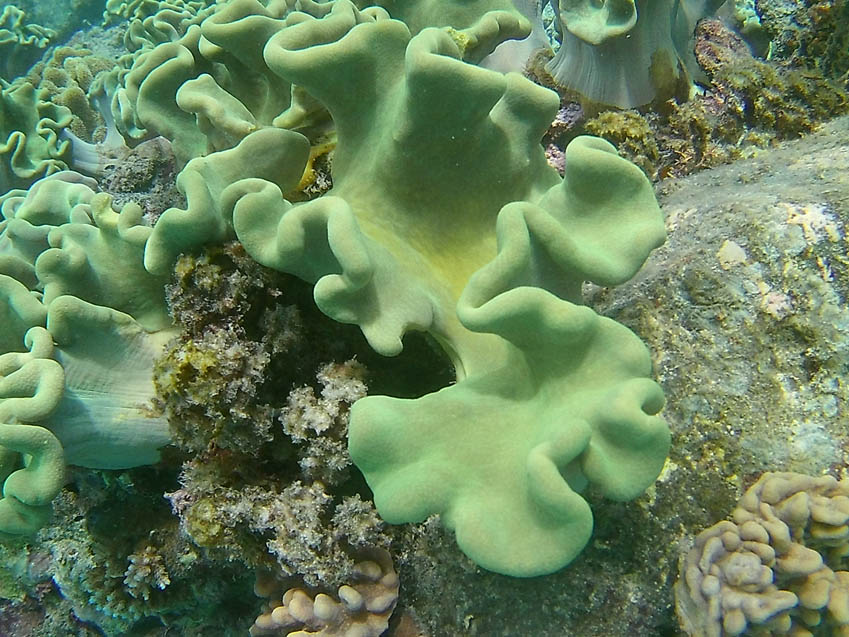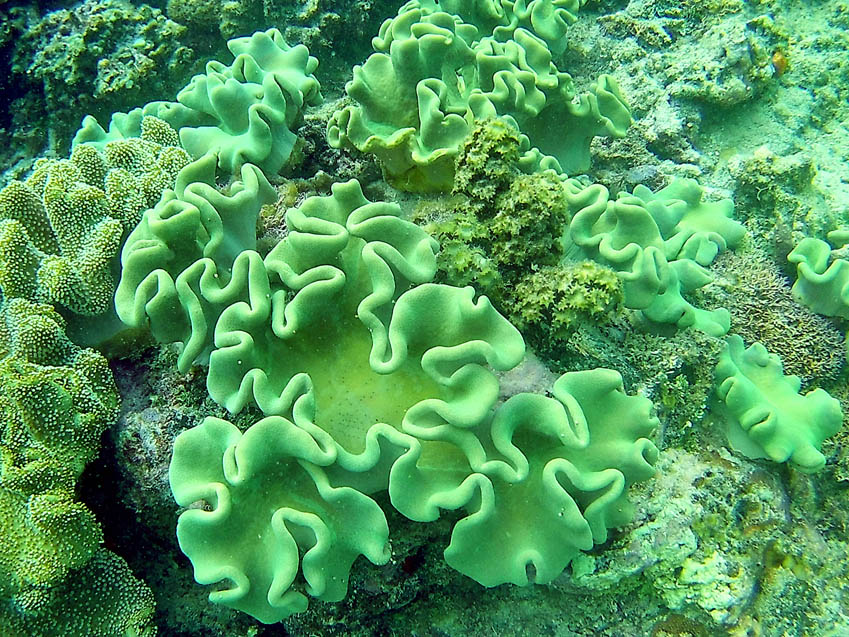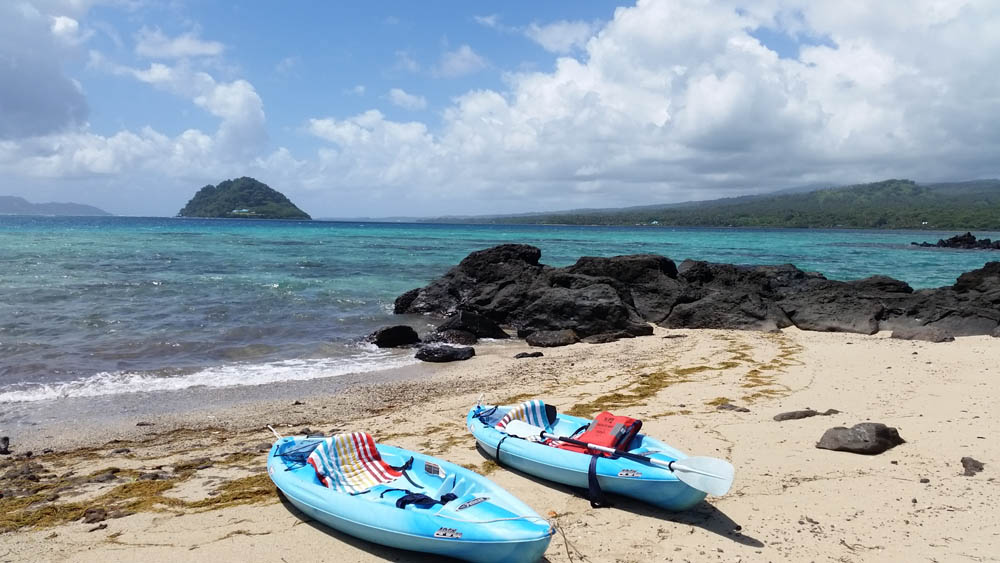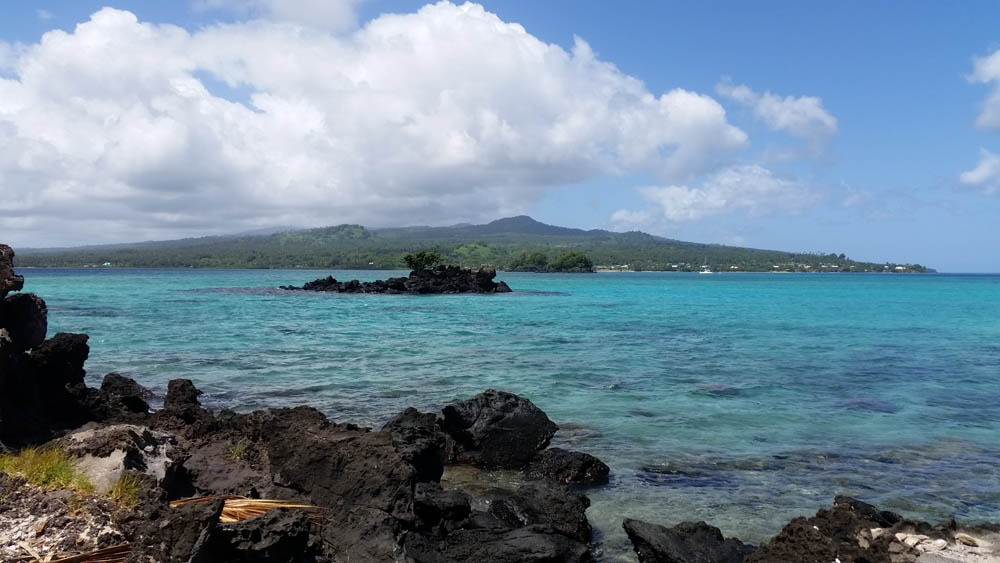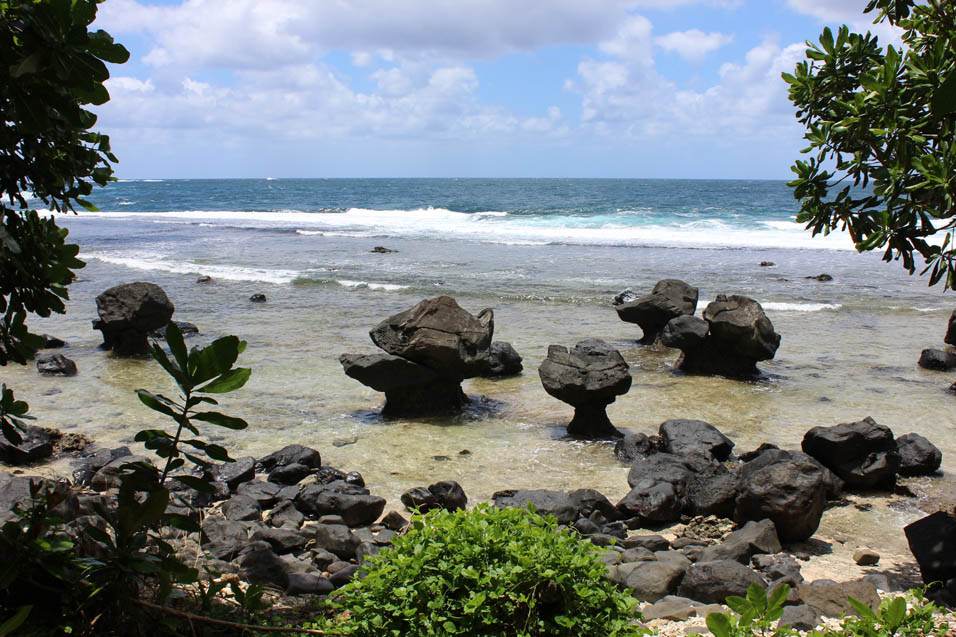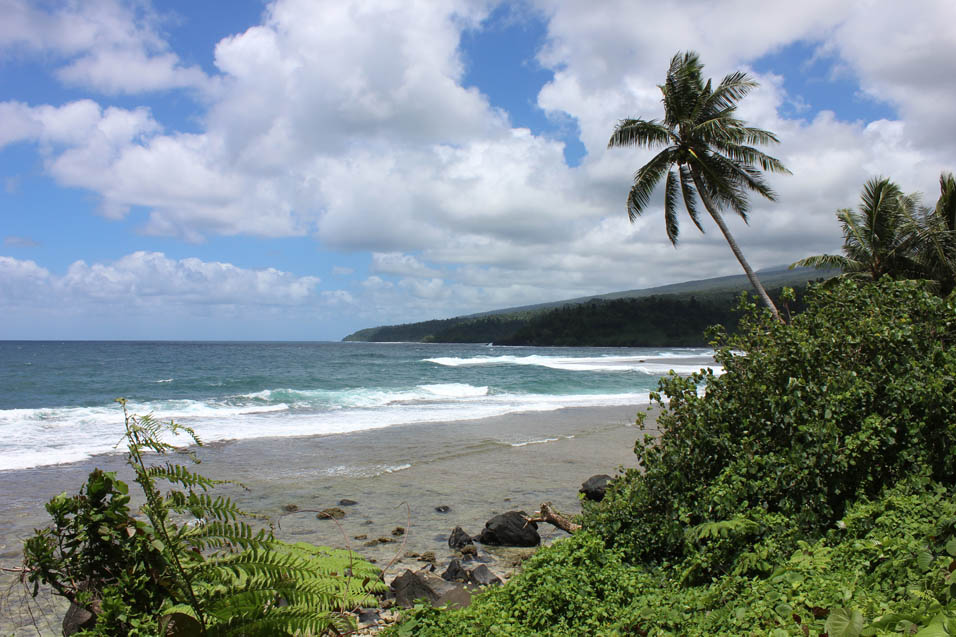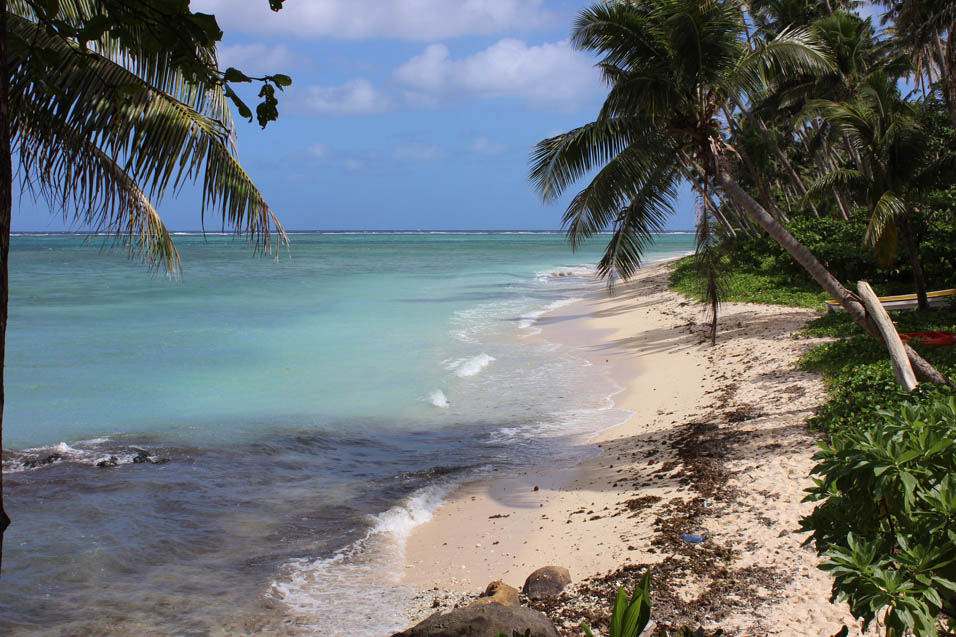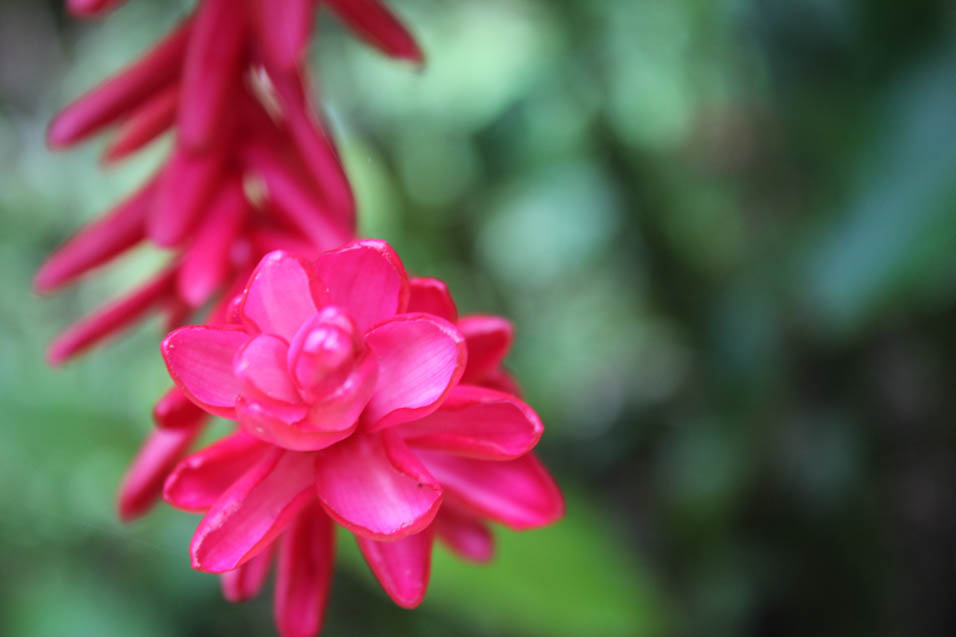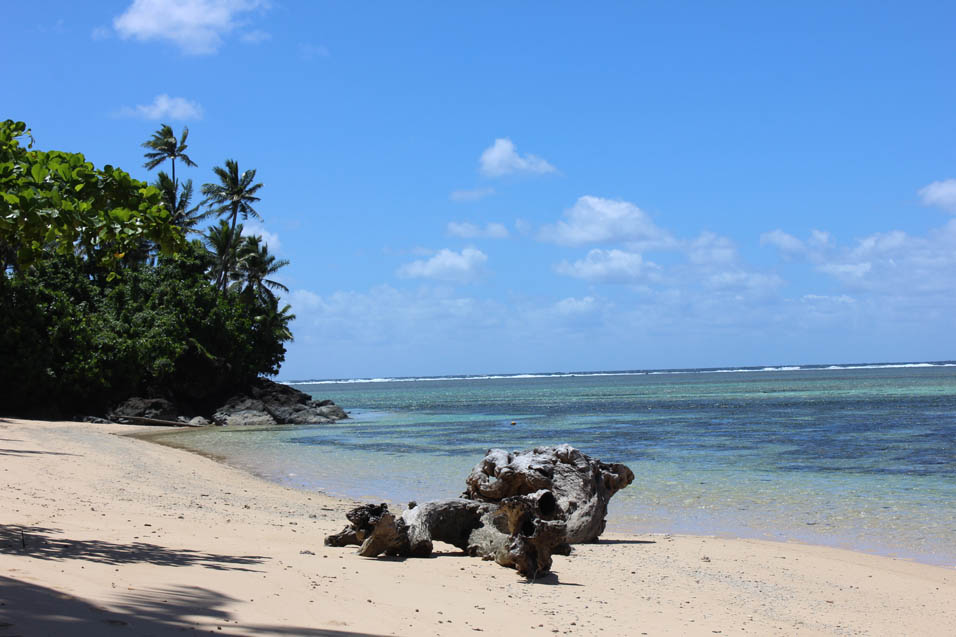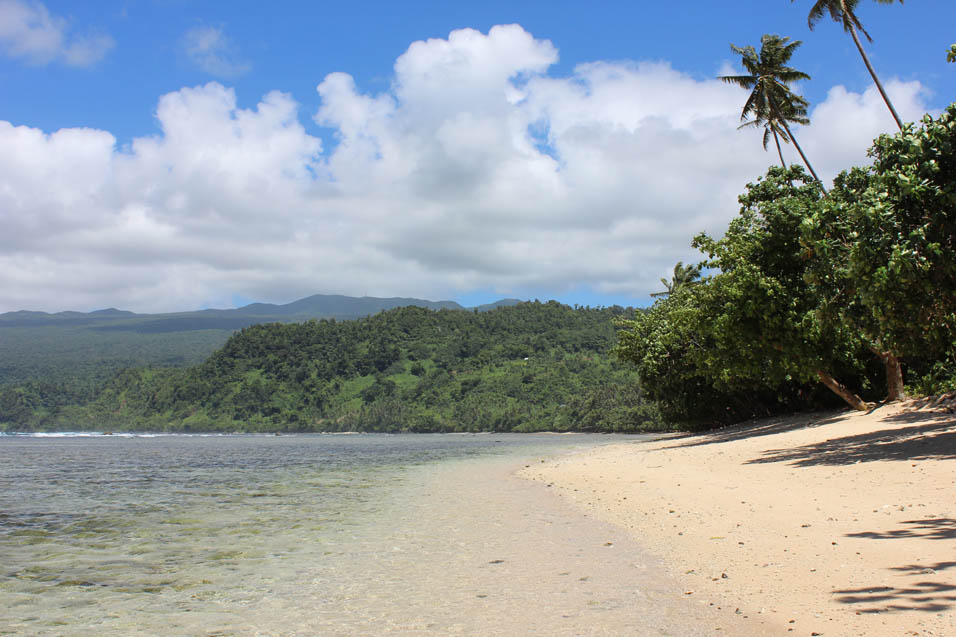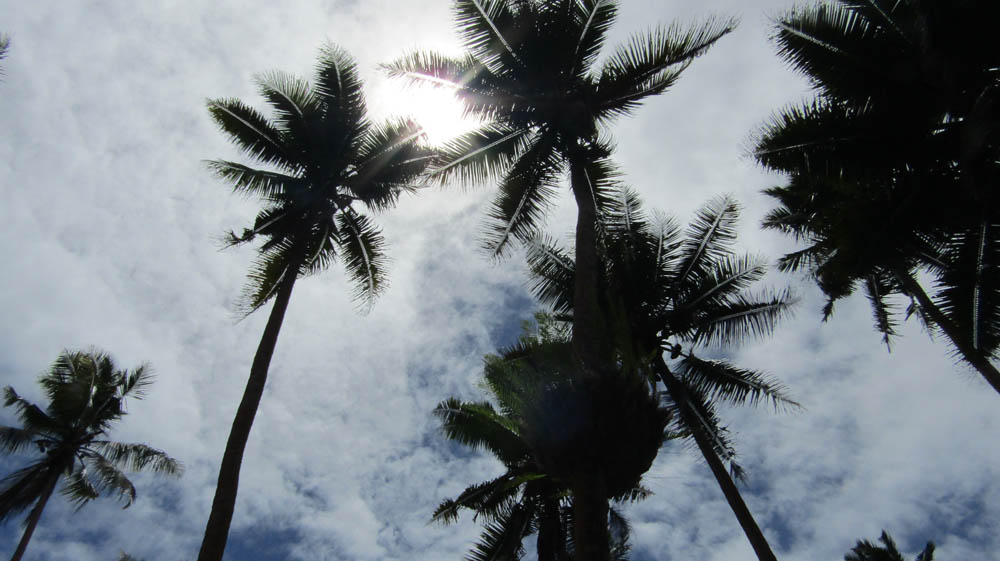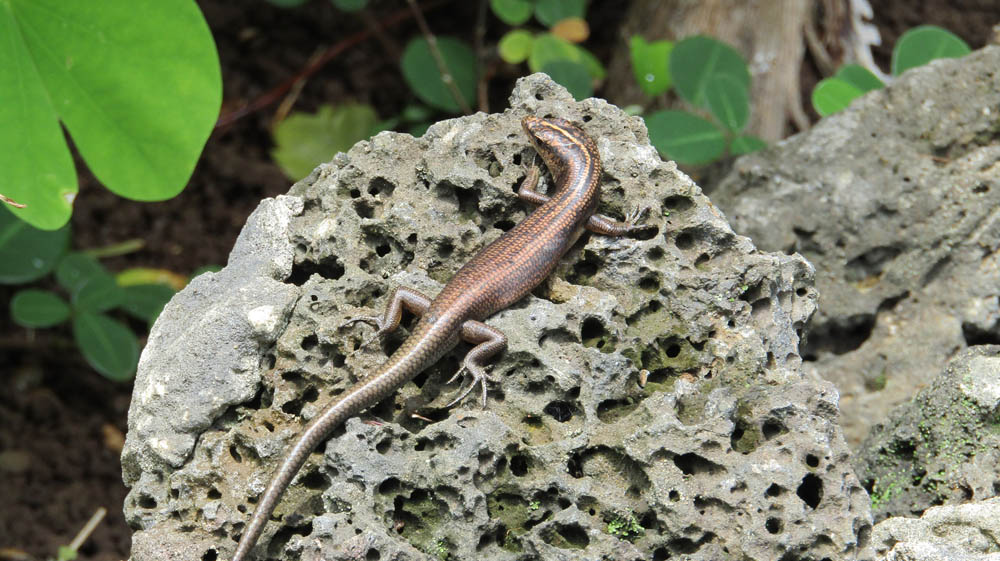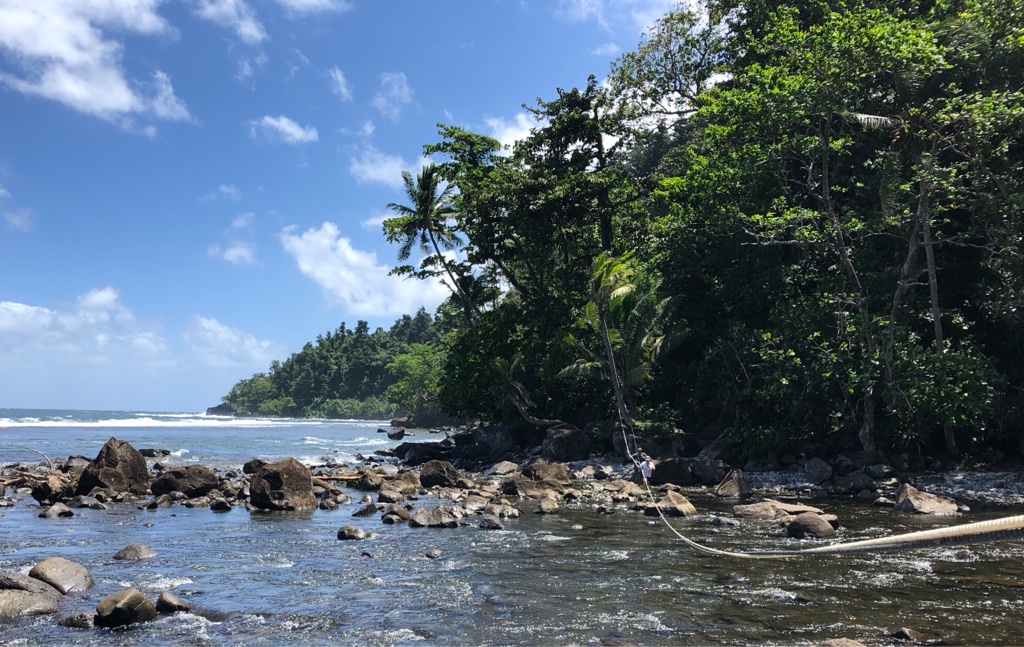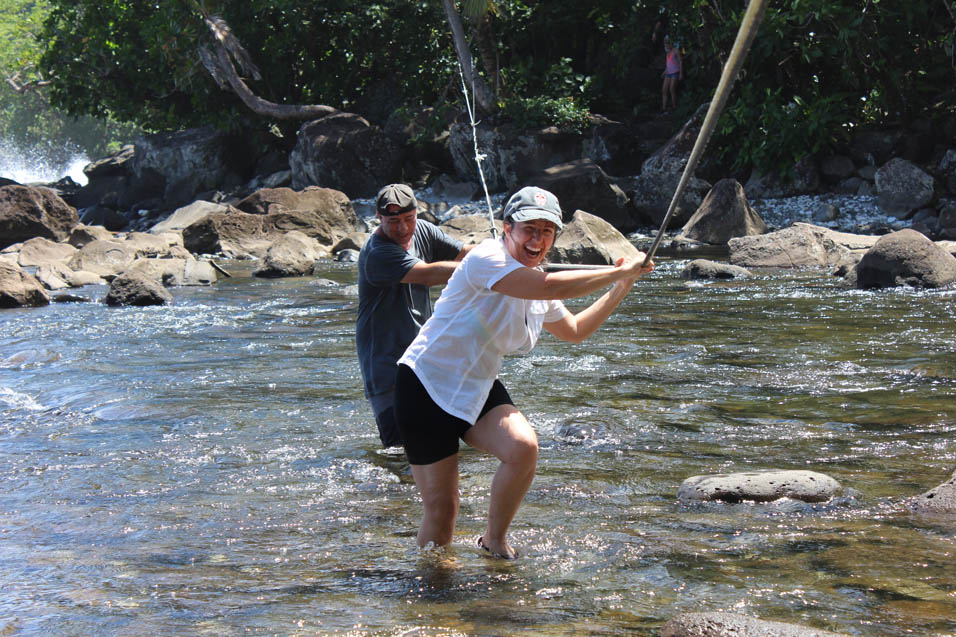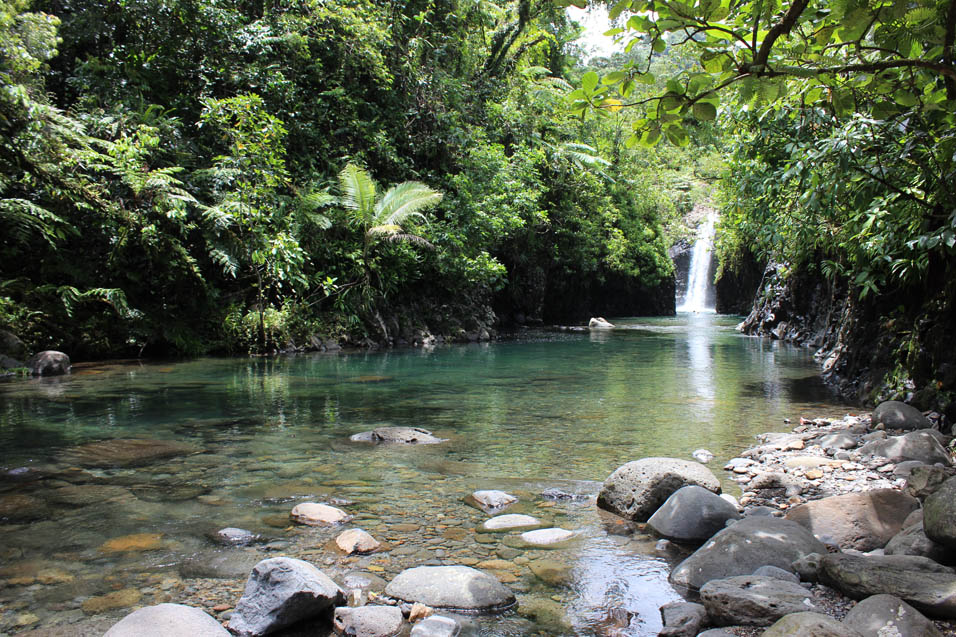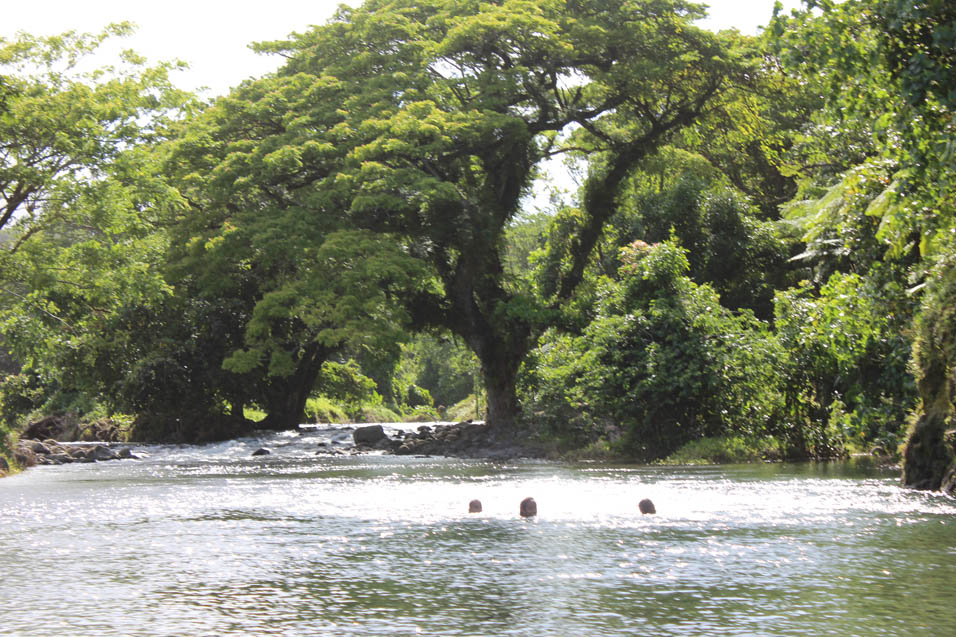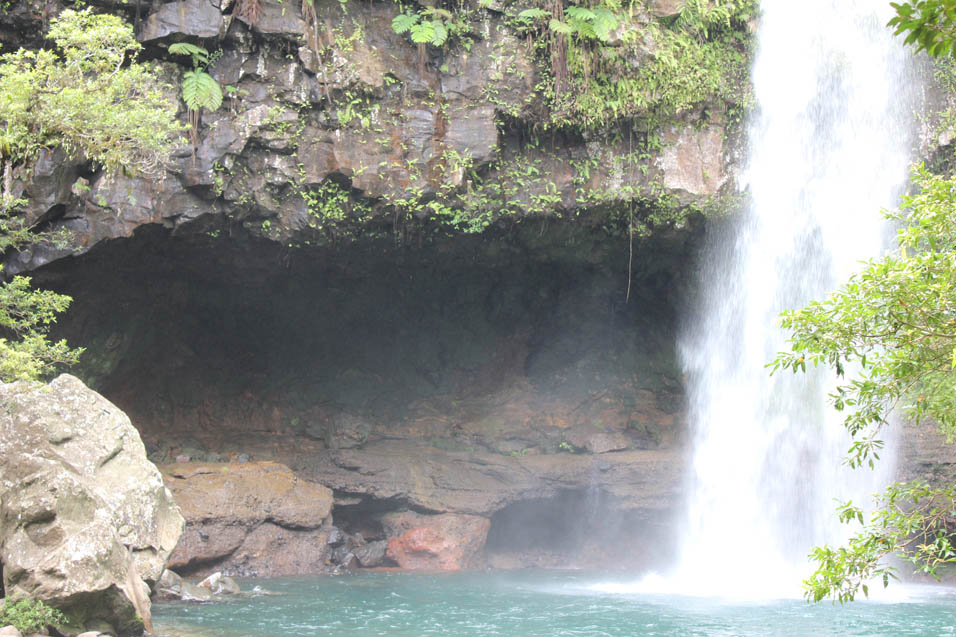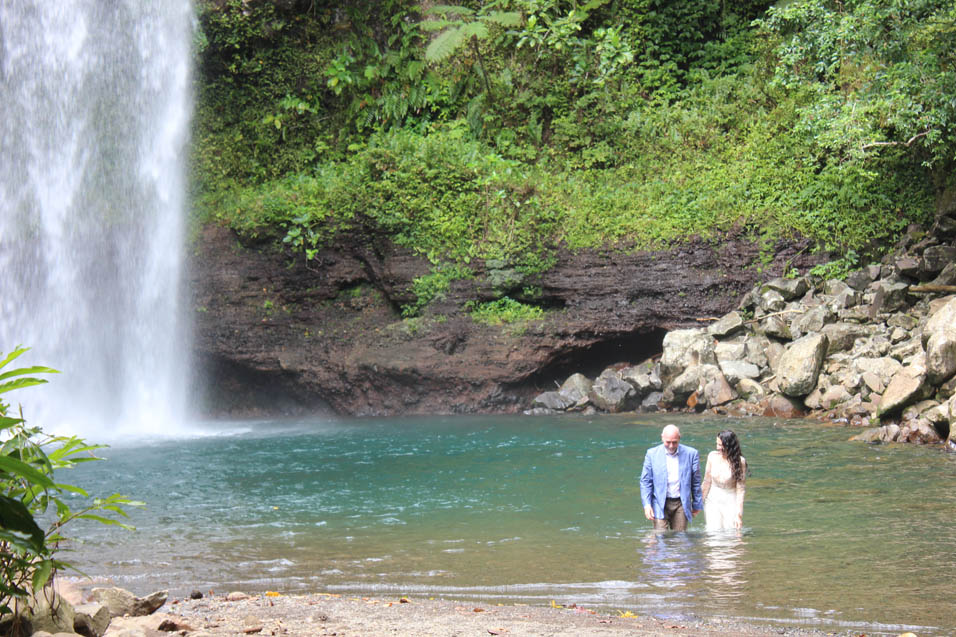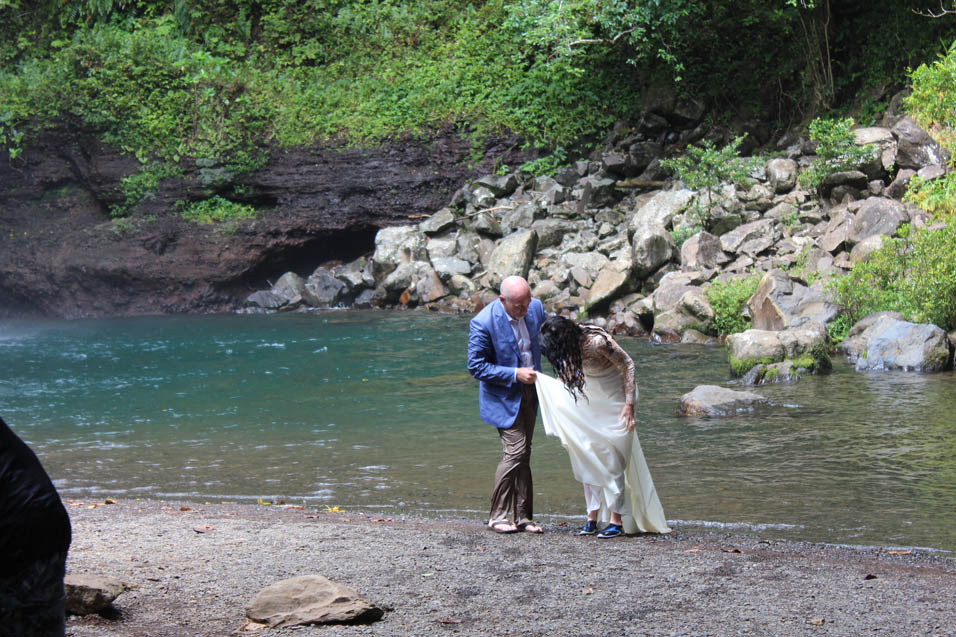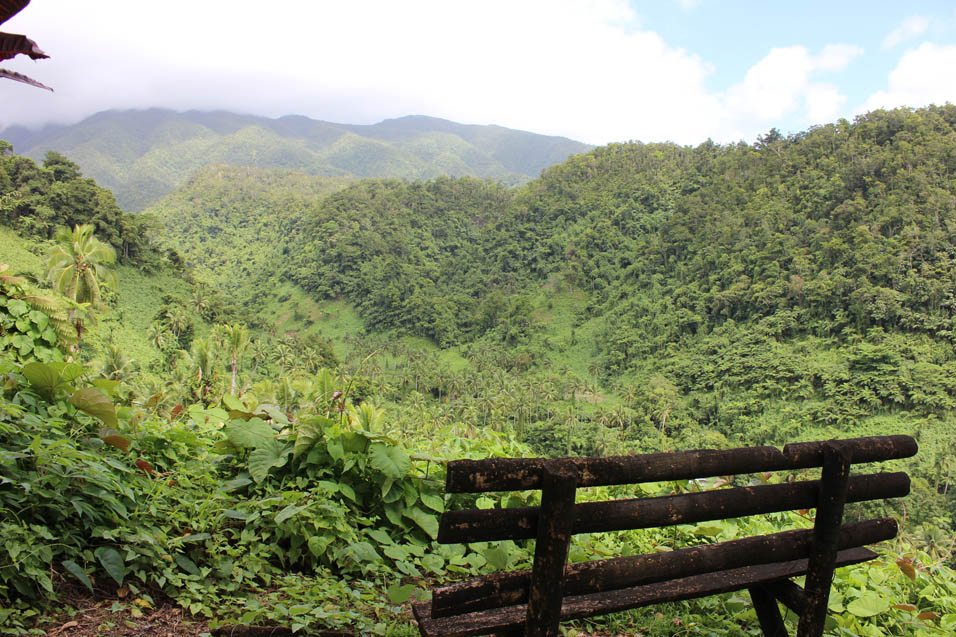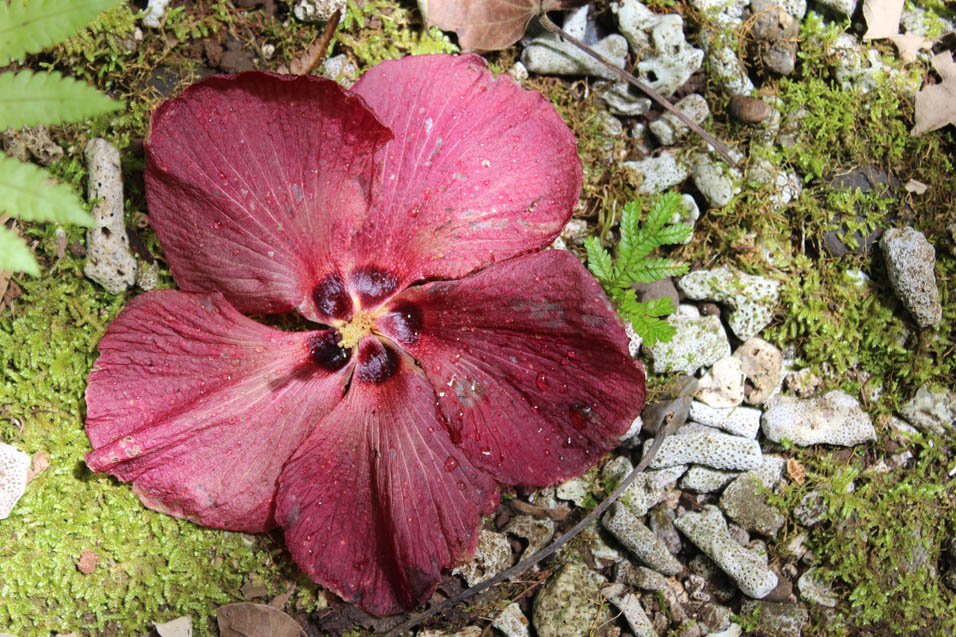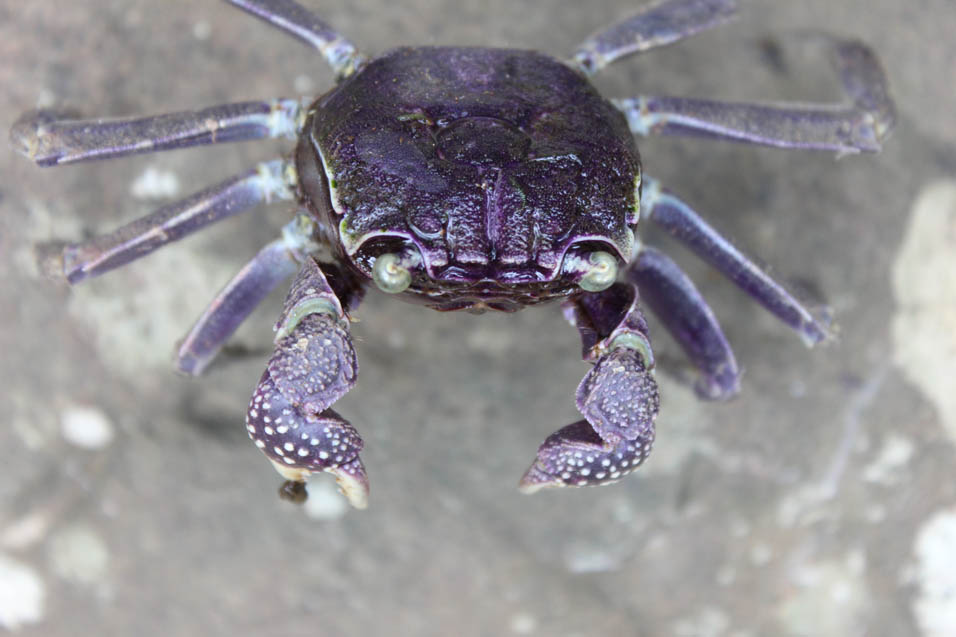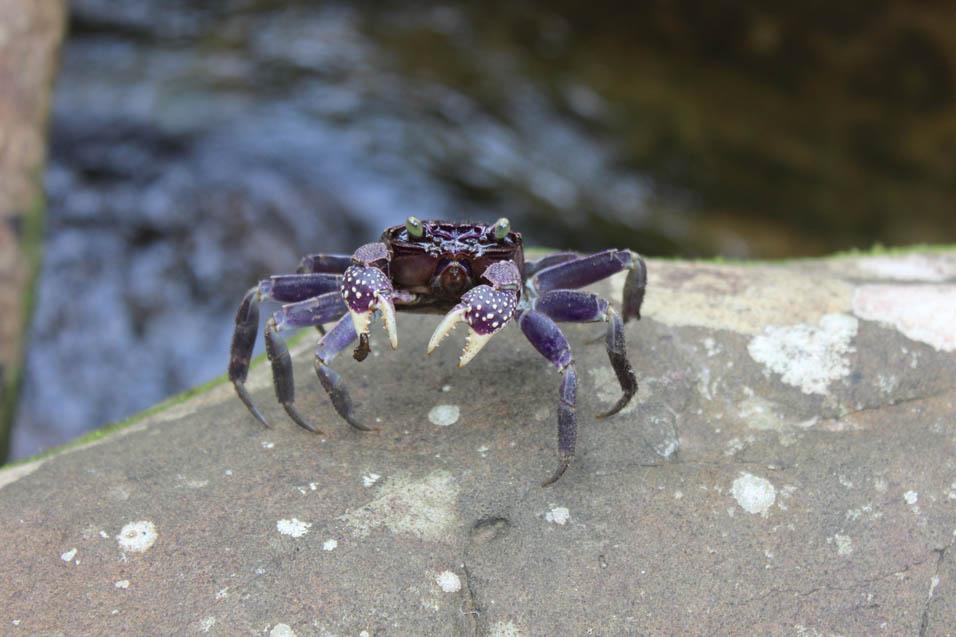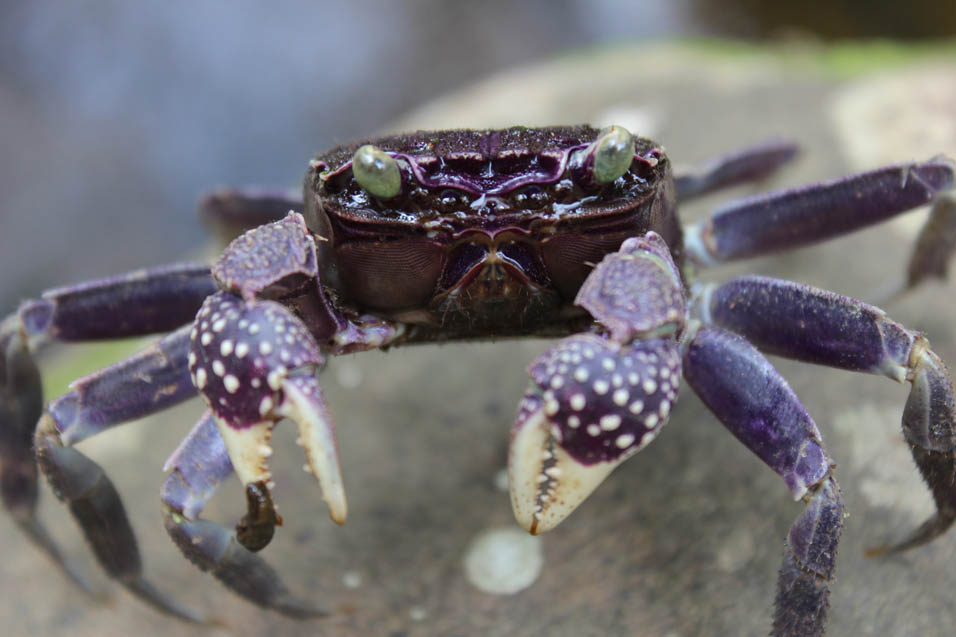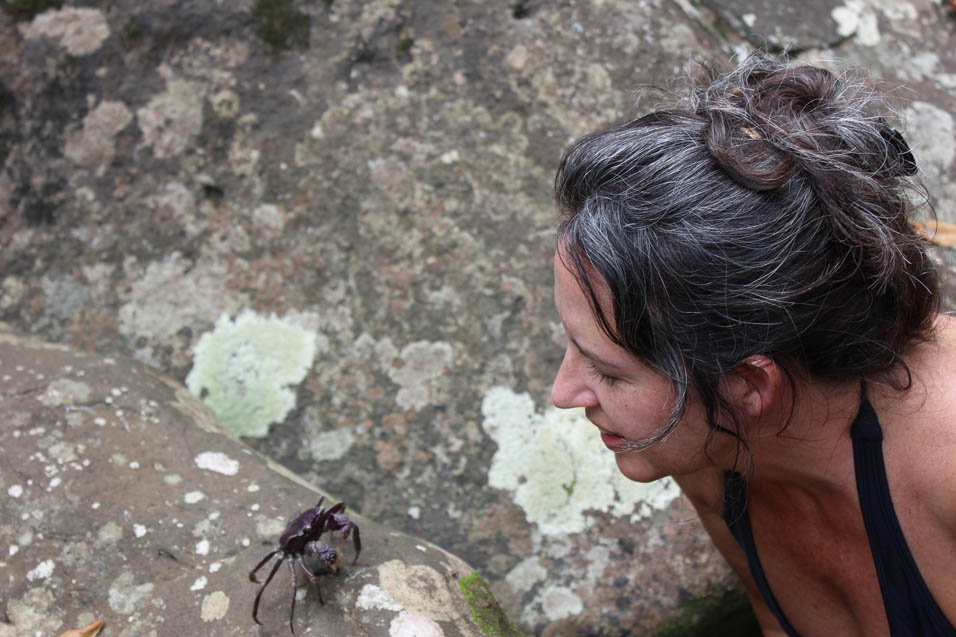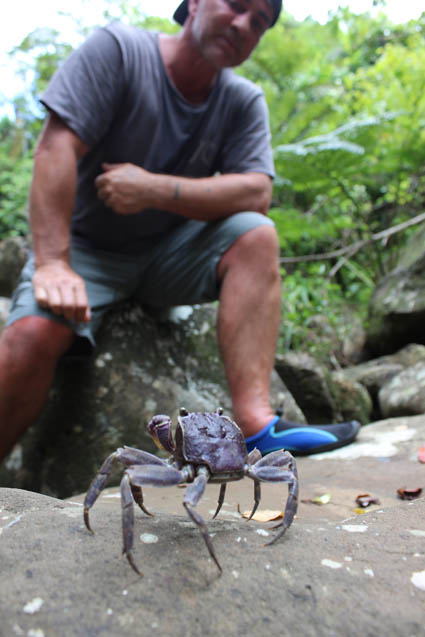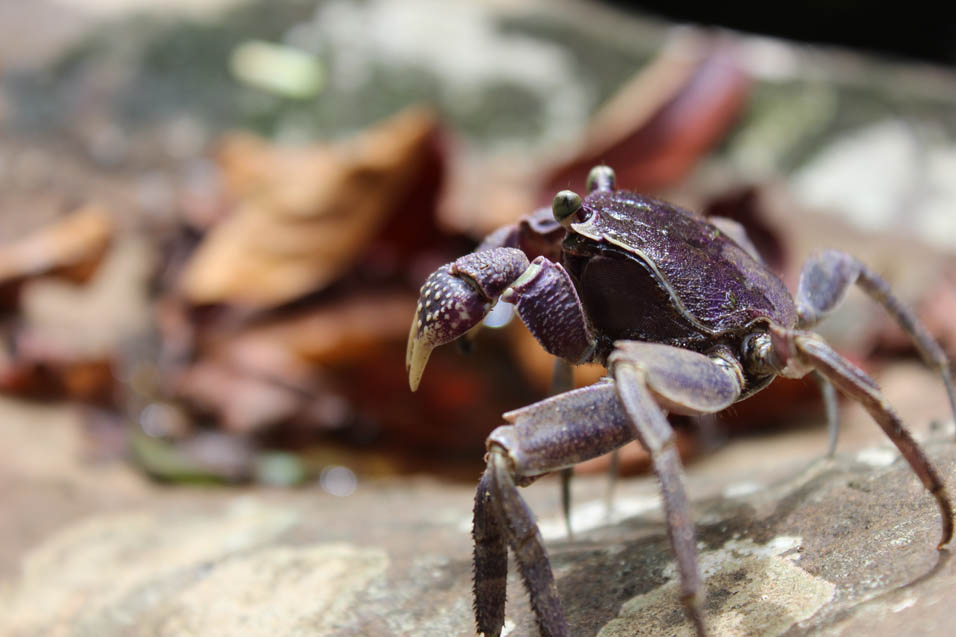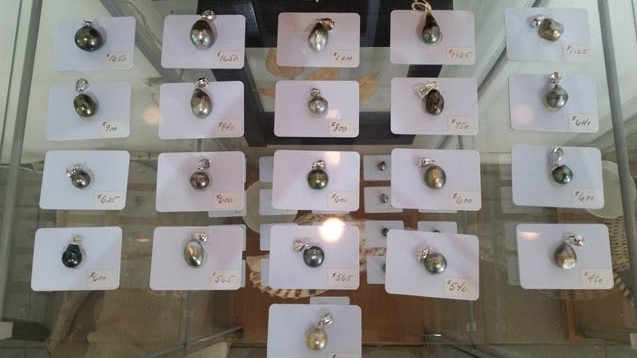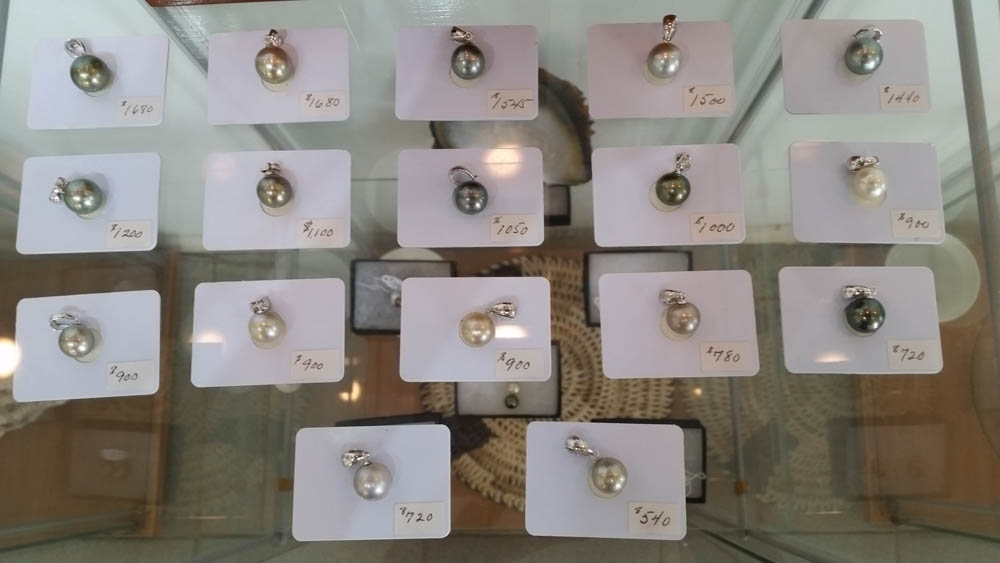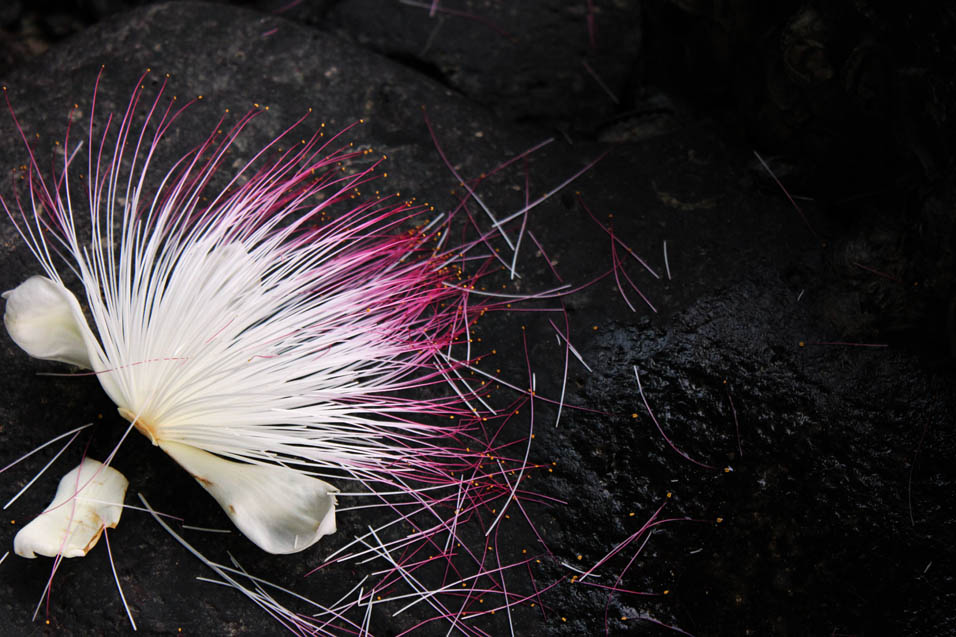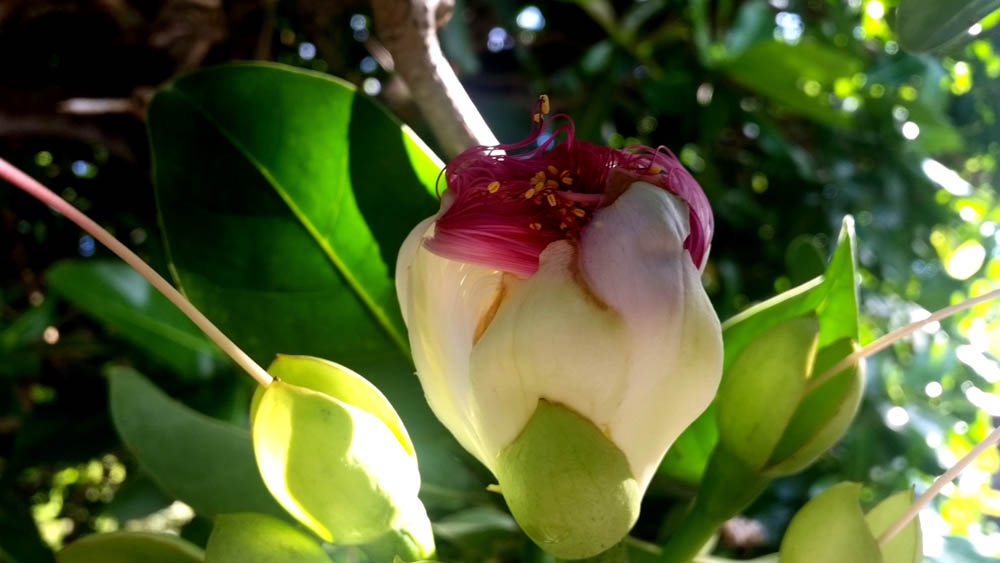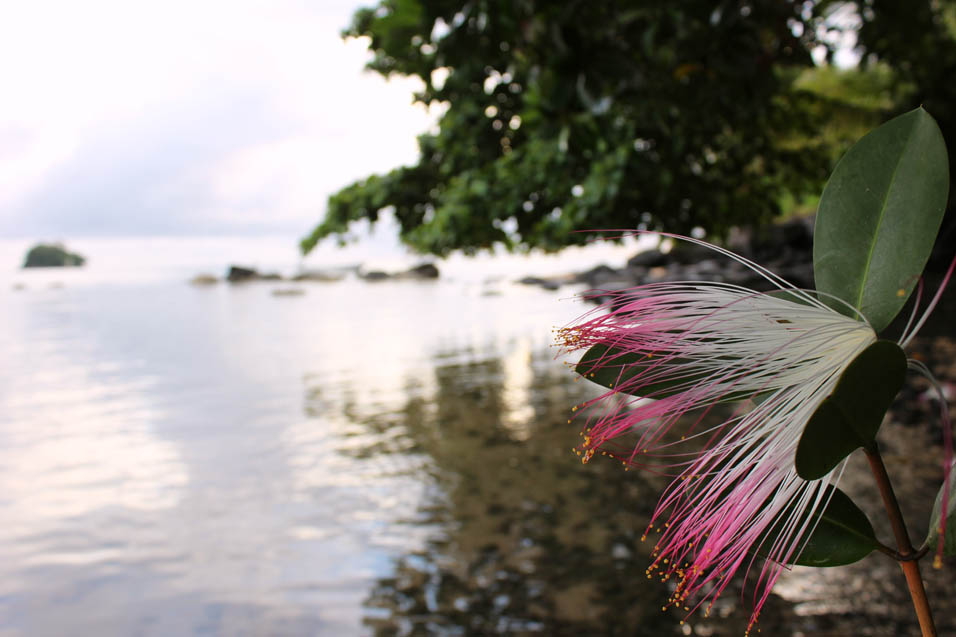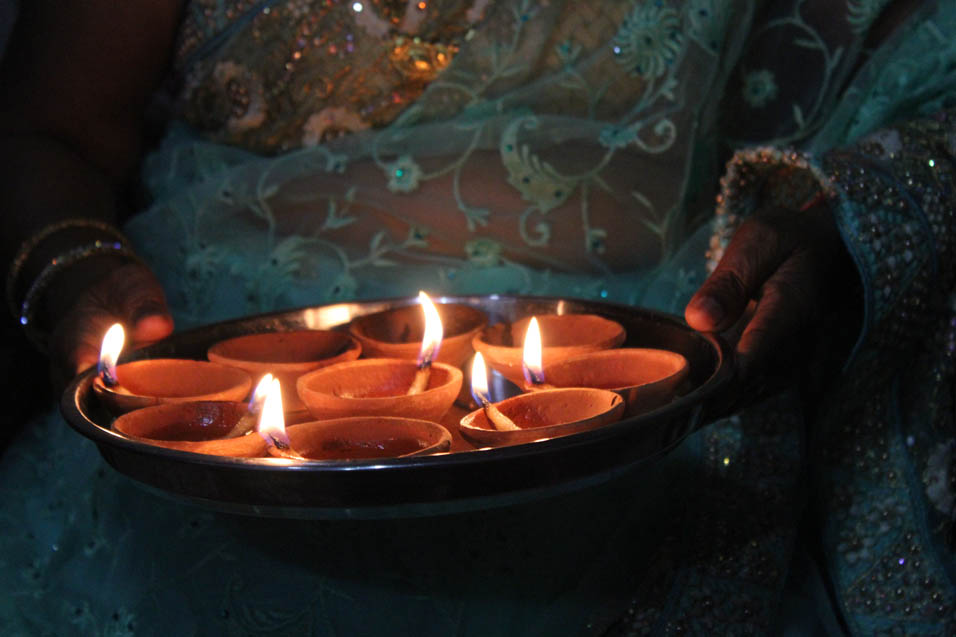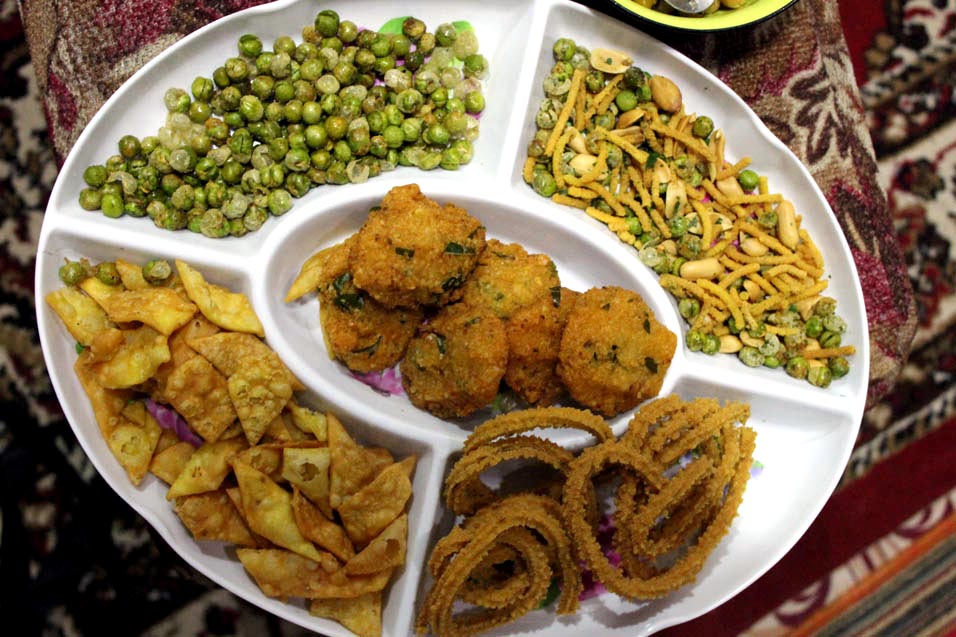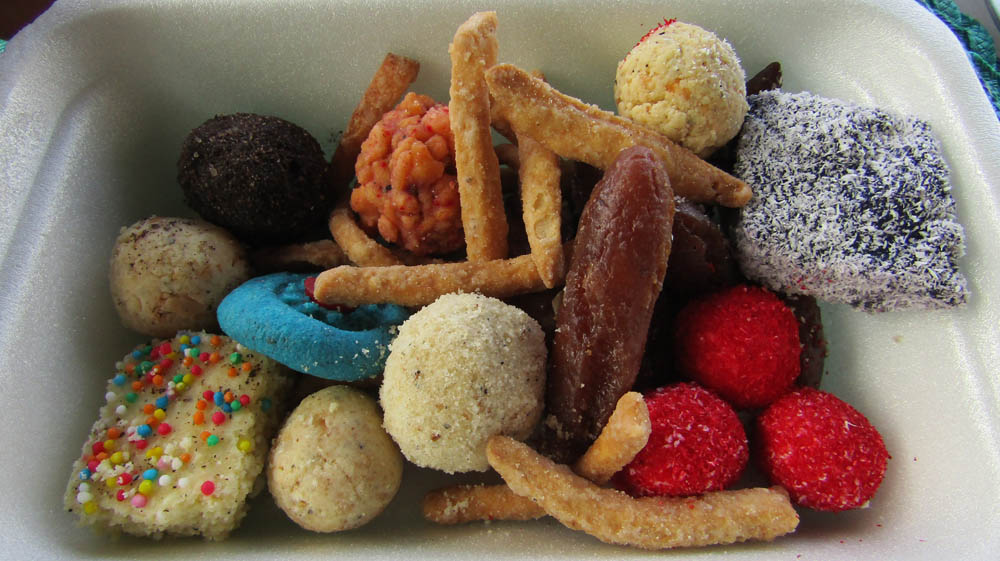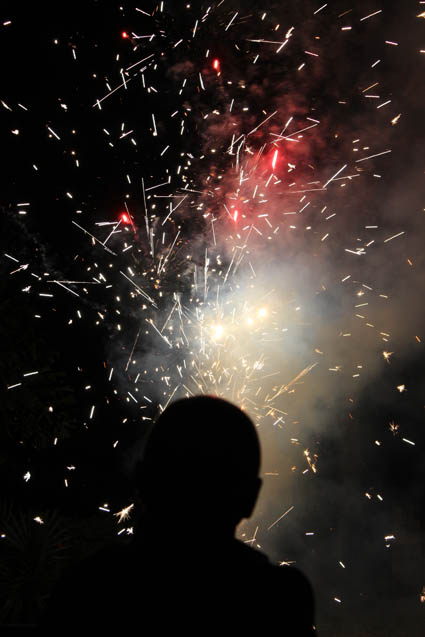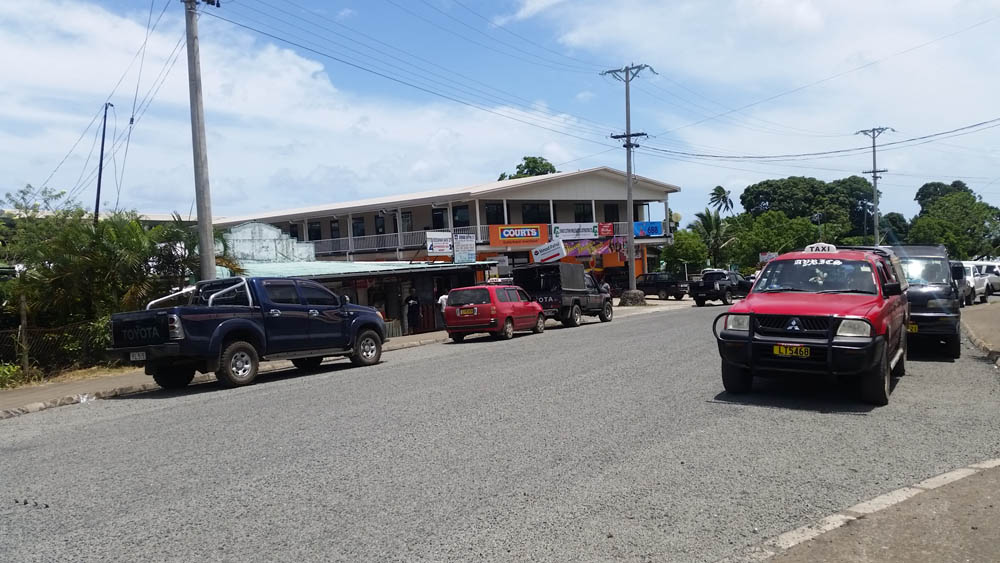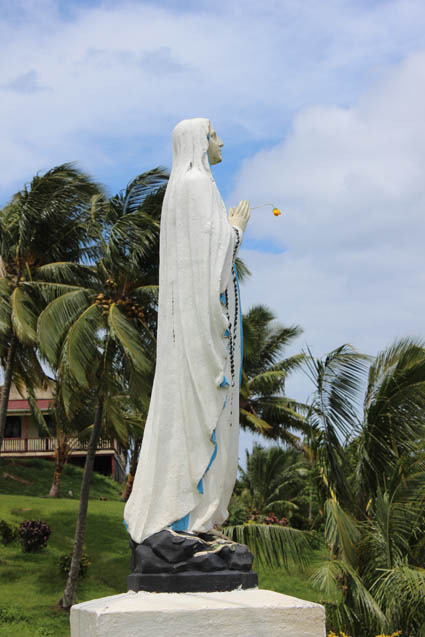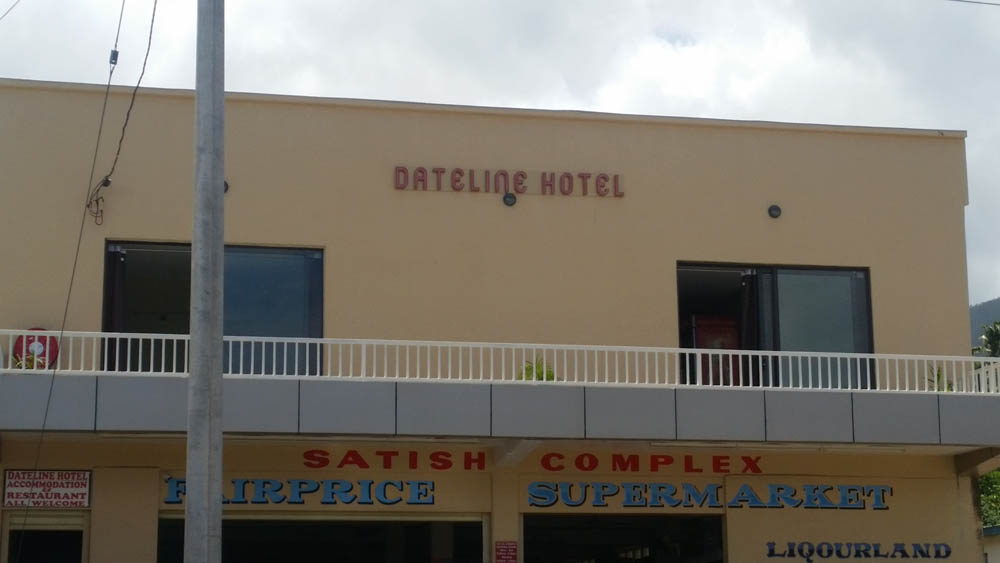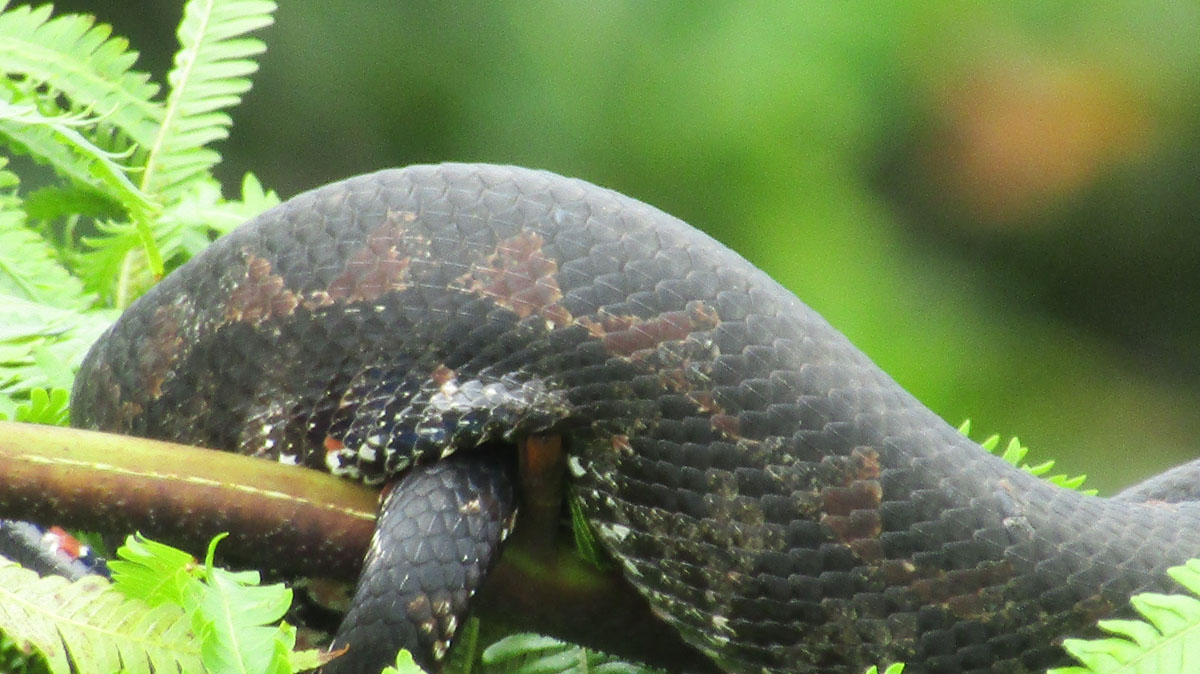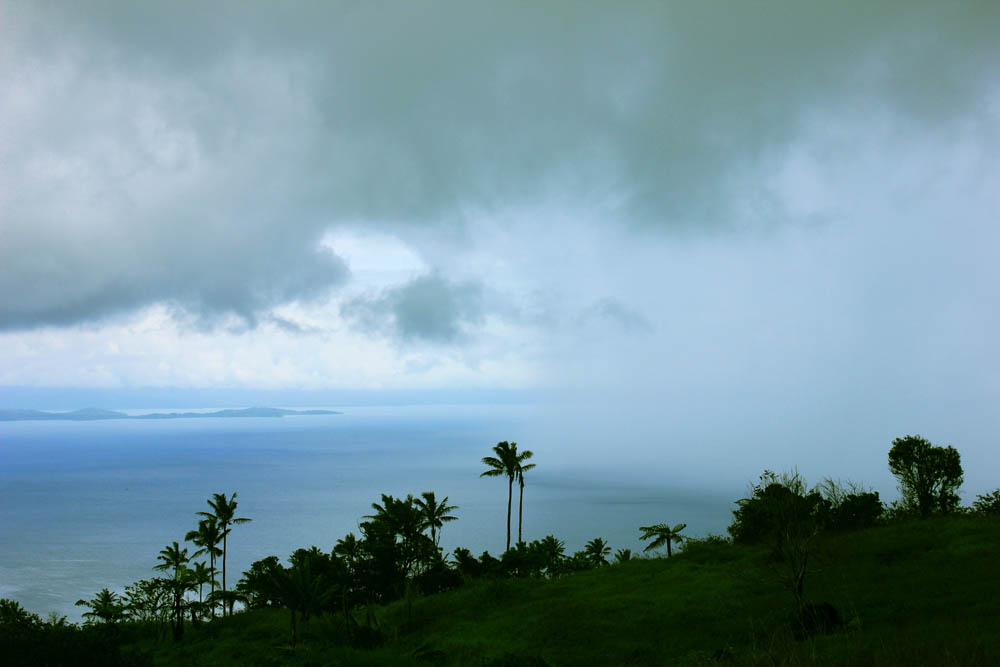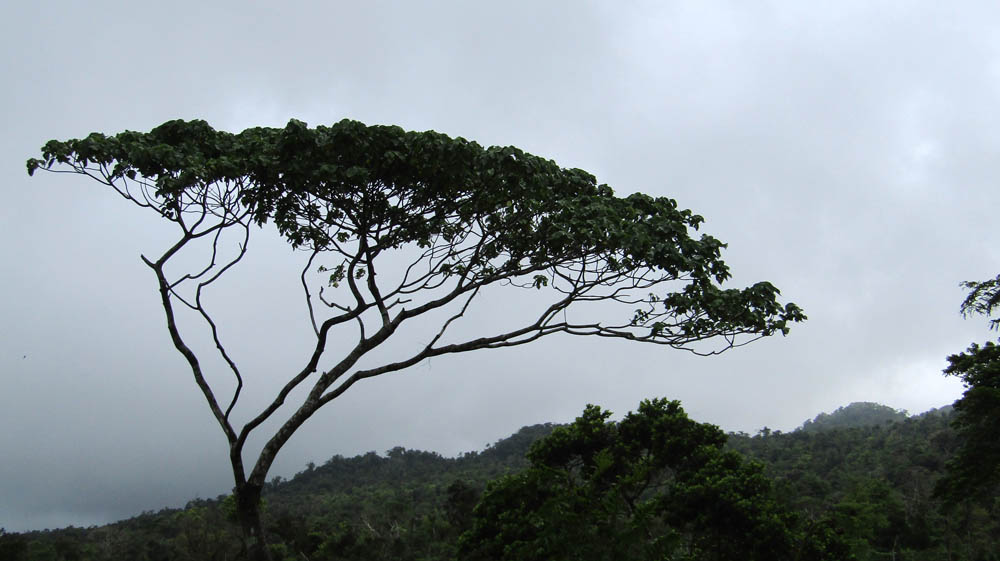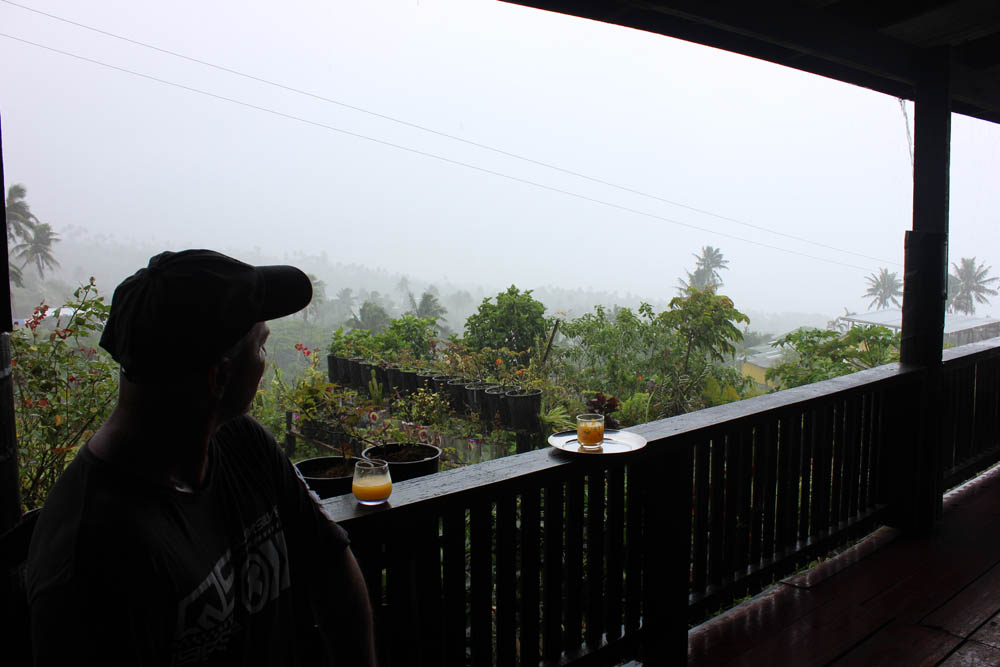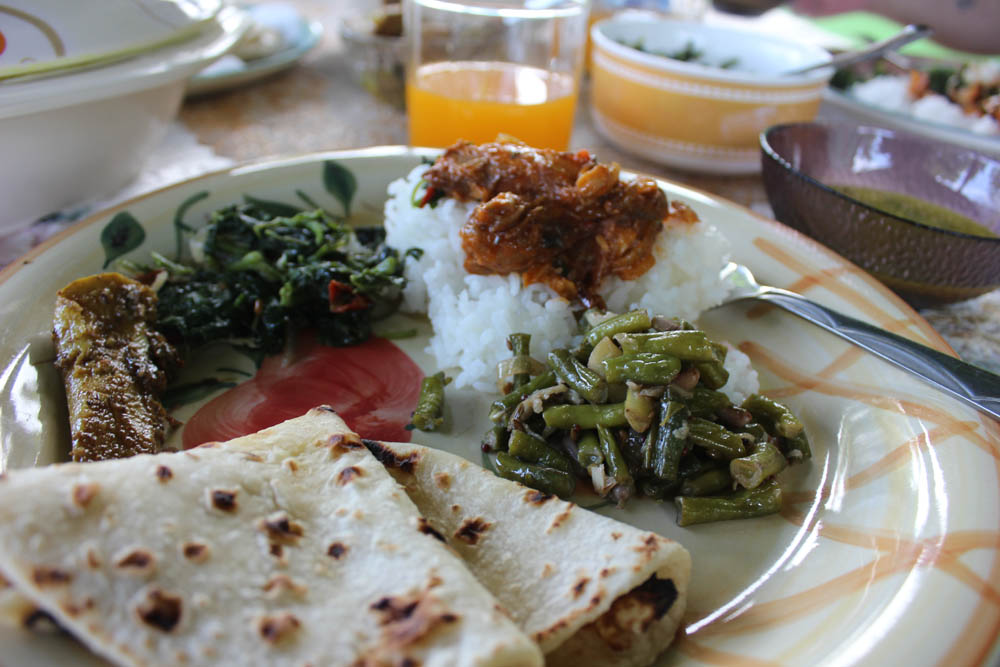Taveuni, Fiji – an hour’s plane ride from the International airport in Nadi, but a place left off the tourism map. It is Fiji’s 3rd largest island with a population of just over 16,000. A place where electricity is only found in the small town and the rest run off generator, solar or nothing at all. Small rocky volcanic islands pop out of the sea, surrounded by white sand and unimaginable blue water in various pantone colours. Past the reef, a sharp drop into dark blue, almost black waters. The island also sports odd creatures like orange doves, black boas, purple crabs and flying foxes.
Take off your watch because the roosters will let you know when it’s time to wake and barking geckos will announce dusk. If you’re asked what day it is, it’s acceptable to answer only with the name of the month. It’s one of the few places where nobody has ever heard of Bitcoin.
Fiji is also where films like Cast Away (near Nadi) and Return to the Blue Lagoon (in Taveuni) were filmed. I saw some of the most beautiful islands and coastlines during that flight…
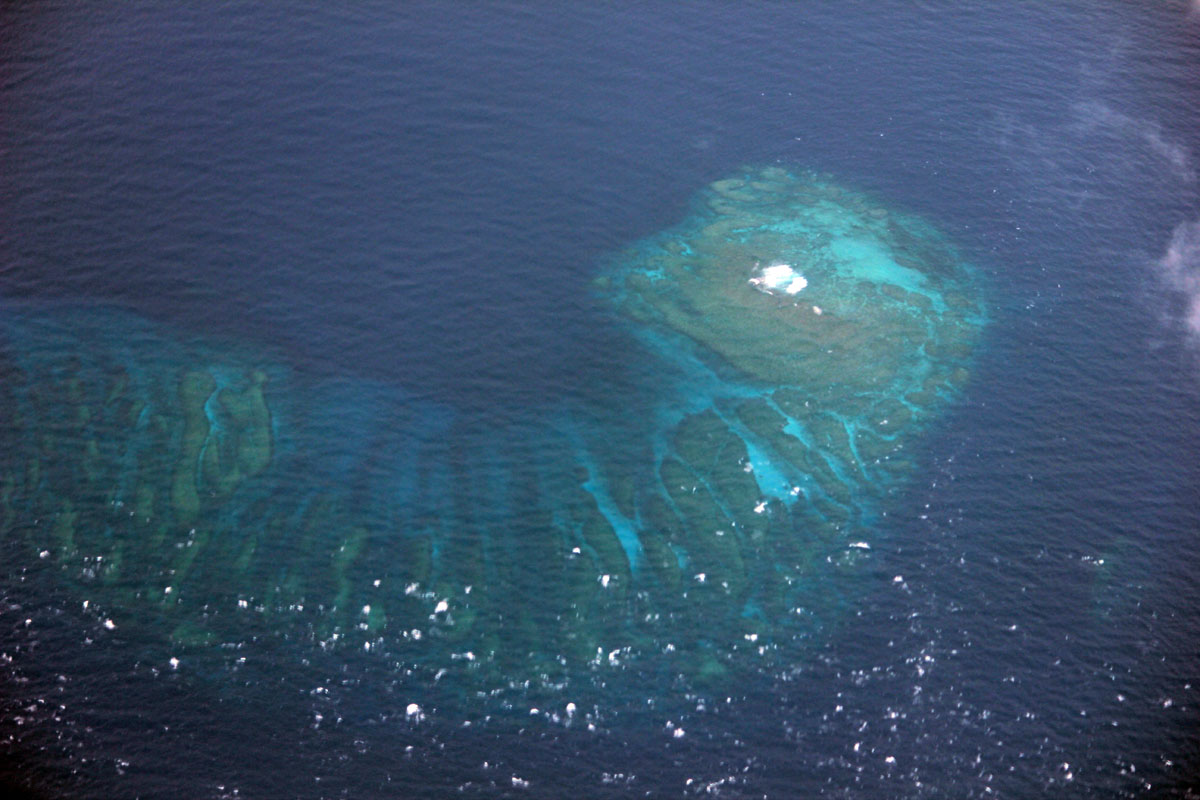
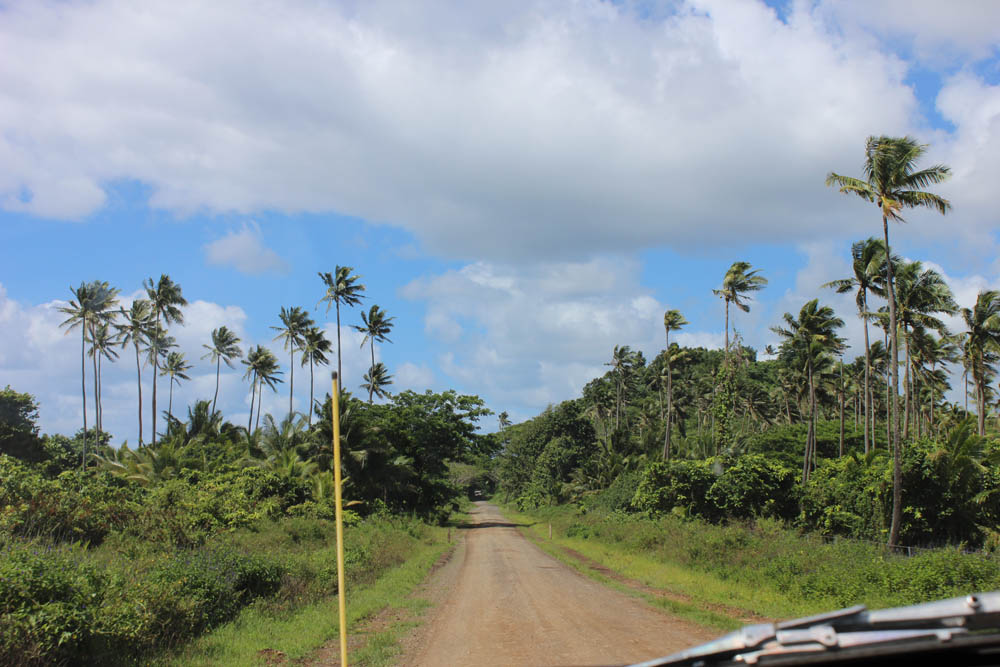
You’ll find families sitting beneath the shade of broad leafed breadfruit trees and you’ll receive a big “Bula” hello with a wave and genuine smiles. Most families make their living by being self-sufficient. There are mango trees, banana, coconut, citrus and even some sheep and cattle here. Villagers live along rocky dirt roads near beautiful clear streams and rivers. Children catch fish and string them on a rope to be cooked over an open fire.
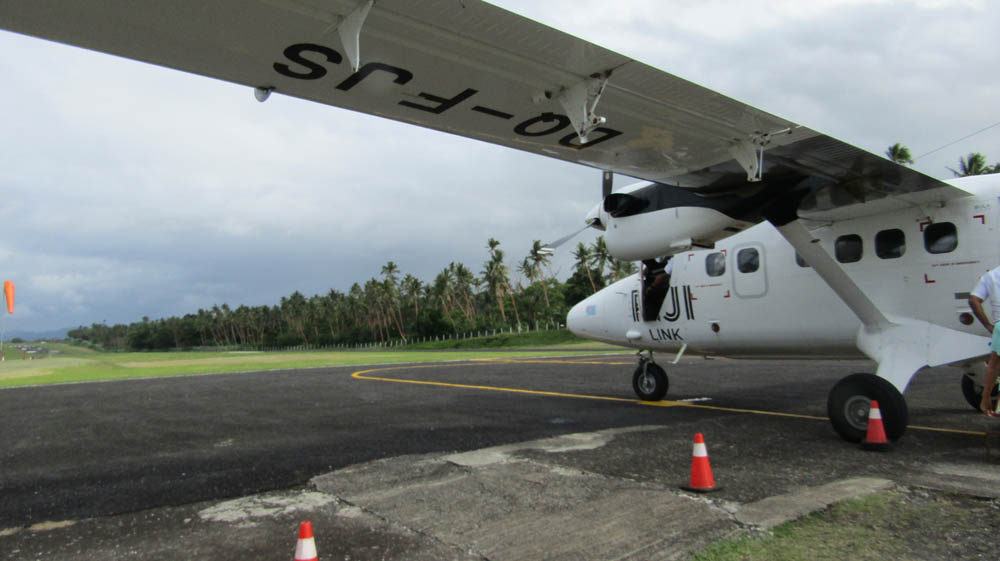
You can find accommodation ranging from 25 to over 1000 USD per night. Planes that arrive during the day carry no more than 20 passengers each. If you come expecting the menus in restaurants to have everything available, think again. We had to order dinner the day before at one place and still only had limited choices. Some of the food may even come all the way from New Zealand. No fresh meat or milk in the smaller shops here, you’ll have to settle for frozen and shelf stable. Although the larger one in town did have a meat counter.

About 100 Americans live on the island and some run the small hotels and diving businesses here. The rare pearl farms were founded by Canadians and a Fijian/American. They are treasured items found nowhere else and garner high prices, although bargaining is expected.
I think I’ll break down the subjects here since there’s a lot to cover:
Rainbow Reef
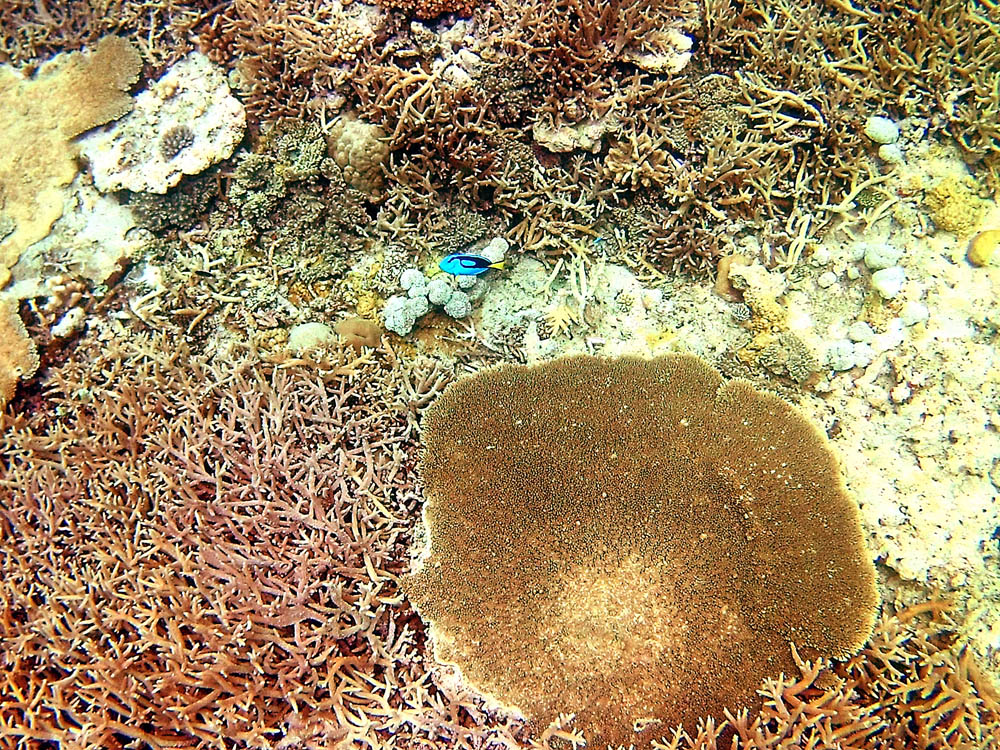
The Somosomo strait between Savusavu and Taveuni holds a precious gem…the Rainbow Reef. Coral feeds off of the nutrients in the current, supporting a vast array of life I’ve never seen elsewhere. Only the Great Barrier Reef comes close. This nearly 20 mile long reef sports hard and soft coral and a variety of the most unusual and colourful fish in the world (over 1200 species). You can see a not so great video of the cute blue tang here.
On one trip, a diver with professional camera equipment who has dived all over the world, said Fiji was the best and I could see why. Although cyclone Winston wreaked havoc on the land and reefs all over the South Pacific, the Rainbow reef has recovered nicely…a testament to the unpolluted waters and lack of visitors.
I can’t say enough about this place. I’ve tried to adjust the photos but it still doesn’t do them justice. Just go see it for yourself. One reason I chose this island over Savusavu was because pretty much all dive shops depart from Taveuni to get to the reef, even though it’s actually closer to Savusavu. You have a couple of choices on Savusavu to stay but they are far away from everything.
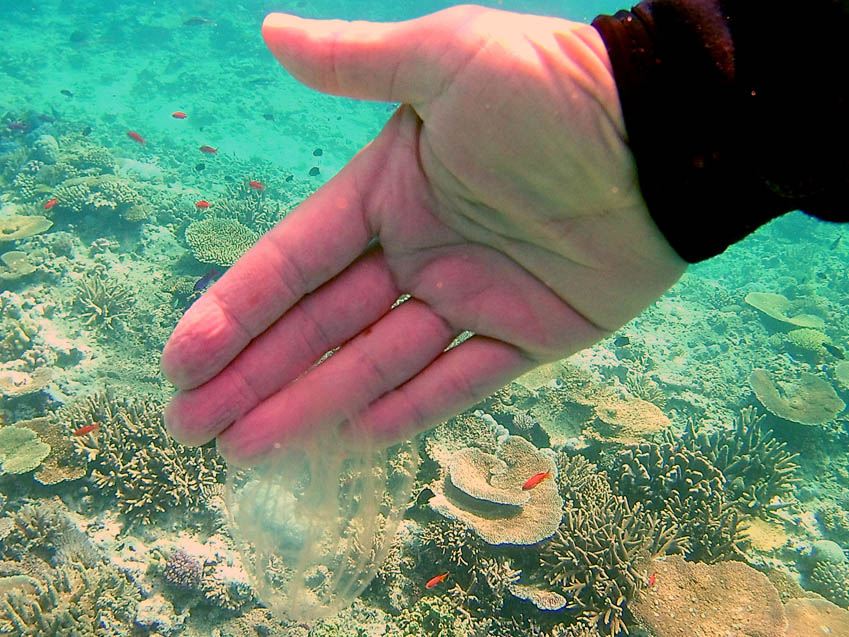
The House
We stayed at an AirBnB house near Audrey’s beach which was perfect for us. We had a friendly chicken we named Henrietta and was nice enough to lay some eggs for us. We had very chunky geckos and a huge golden orb weaver spider, who I’m sorry to say, died a few days after the photos were taken. She may have just been old. I was sad. She was the length of a clothes pin.
The house ran on solar, as did everyone else’s and because there were no lights on the street at night, the view of the stars was amazing.
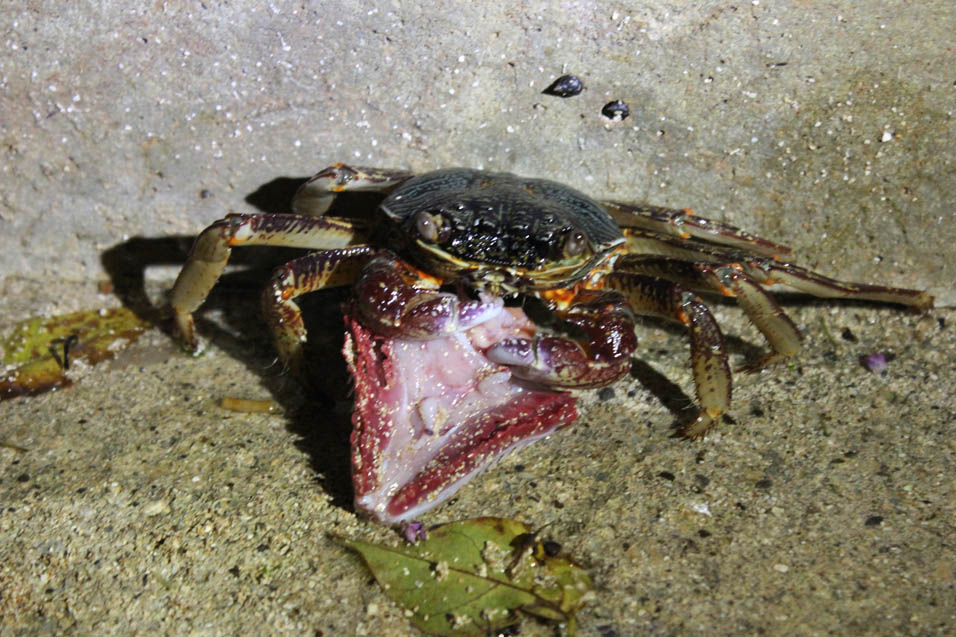
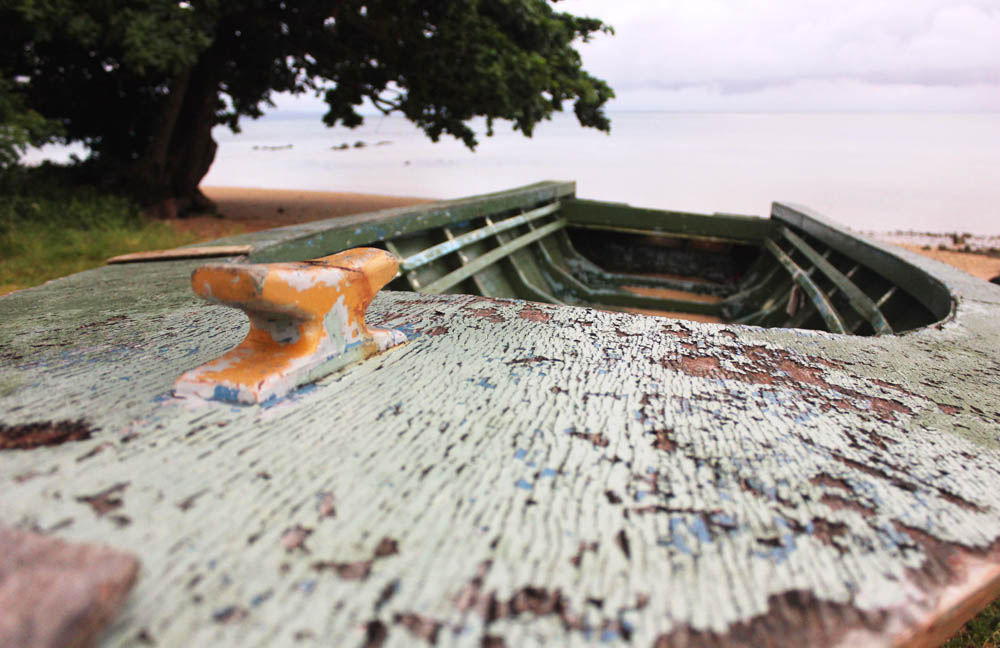
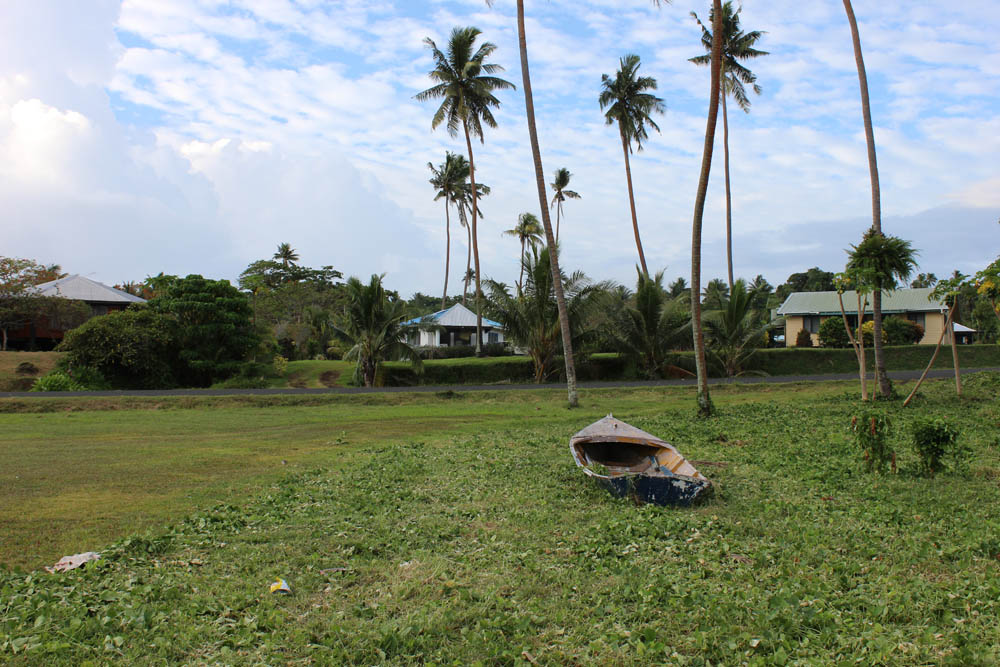
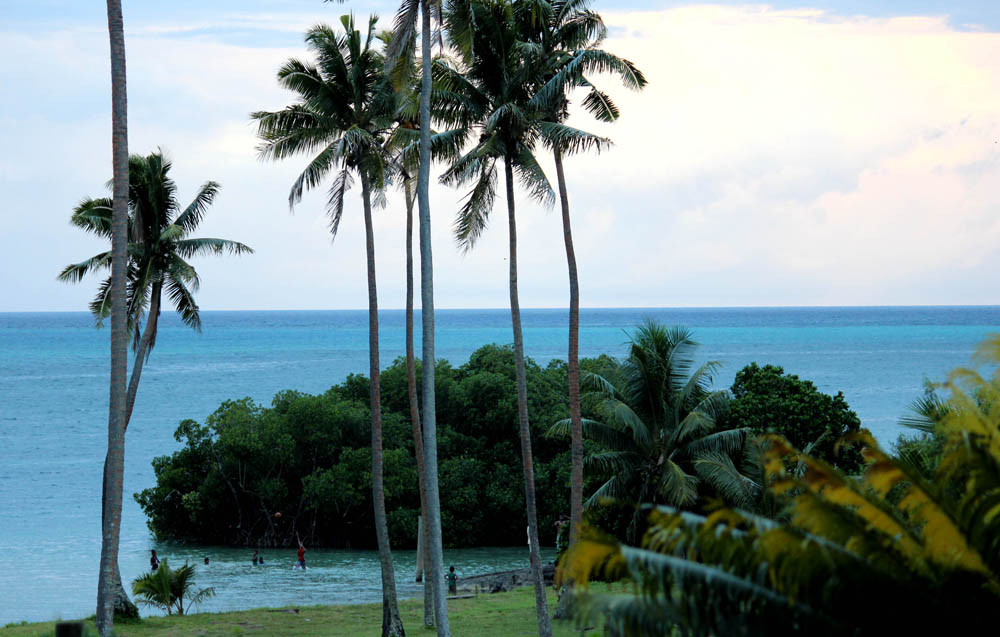
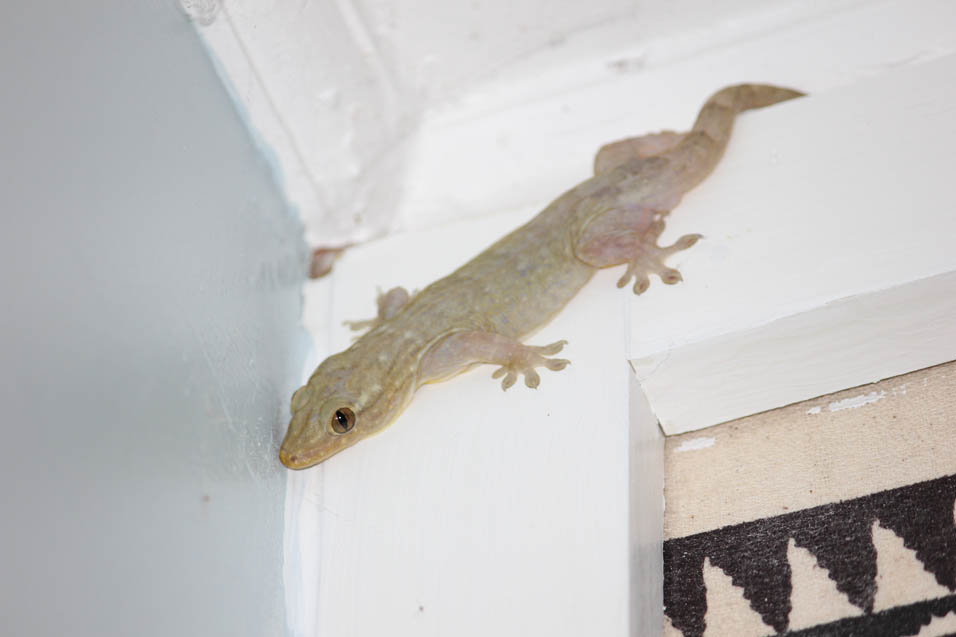
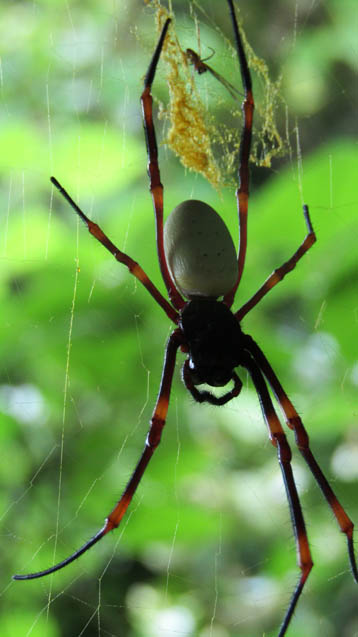
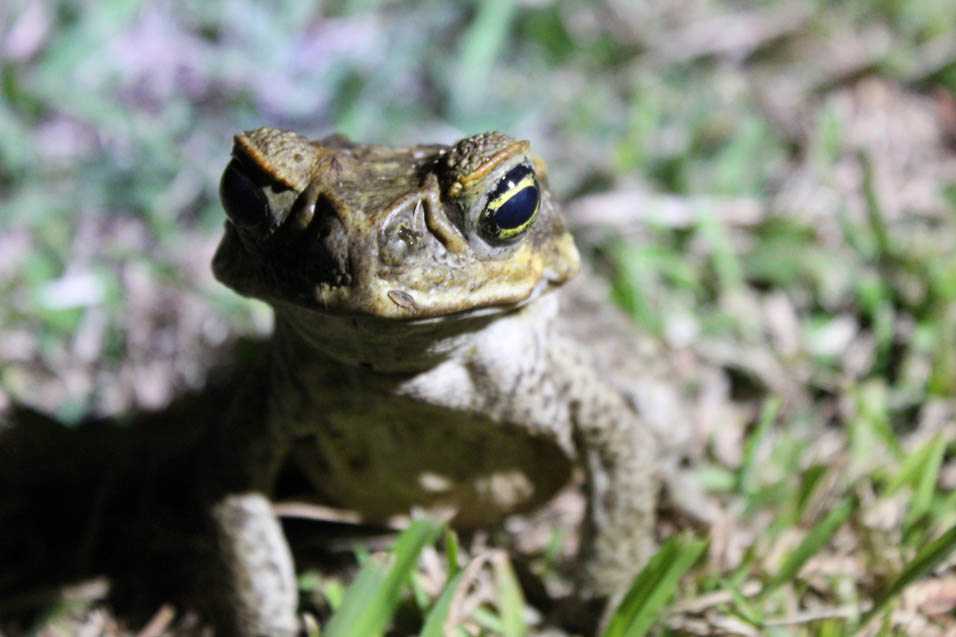
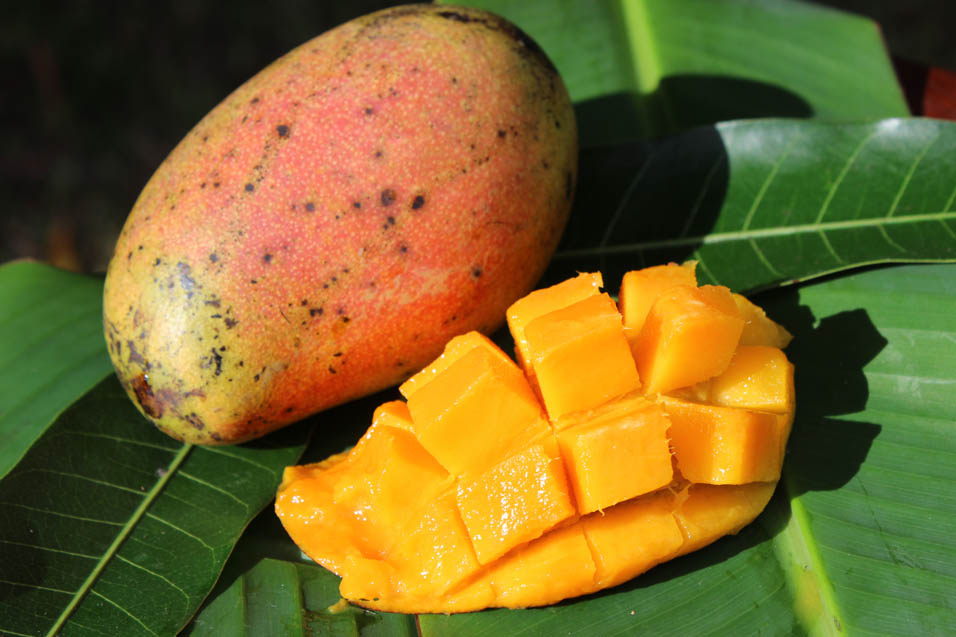
Island off of Audrey’s Beach
Where we stayed was near Audrey’s Beach and there were four islands you could kayak to. The third had a small beach and plenty of tidal pools to explore with some great snorkelling on the other side. We even saw a black and white sea snake! Huge clam shells litter the islands and make great soap and shell holders. These photos are pretty bad because I had to use my phone.
Lavena Coastal Walk
We walked the Lavena coast which was another stunning area, with white sand beaches and volcanic rocks, eaten away at their bases from the waves, looking like large black mushrooms at low tide.
One thing to mention about parks here is that they all charge to enter them. I believe they were around $15 USD. There are no places you can really walk for free here (except the beach, of course). You could wander up some dirt roads but all parks charge a fee.
The shady, sandy path led us through the village where people and kids went about their day. One of the funniest things I saw was a man coming down the path toward us with a wheelbarrow and a child asleep in it. And the most heartwarming thing that happened was when a little girl came up and hugged me and wouldn’t let go. She wanted to play on me like a monkey so I entertained that for a while.
What was once a suspension bridge over a rocky stretch of river, was now just a rope, tied between two trees on either side which we traversed in order to get to the waterfall. The approximately 20 metre stretch across the fast flowing river seemed like the perfect place to twist or break an ankle. The water came up to mid-thigh although if it had rained, easily up to one’s stomach.
Once we finally arrived at the falls, the shallow, cold river would need to be walked, then a final swim in order to get close. After we arrived, a film crew showed up to shoot a tourism video for the European market. Once the drone went up in the air, we left.
You can allegedly see the orange dove here.
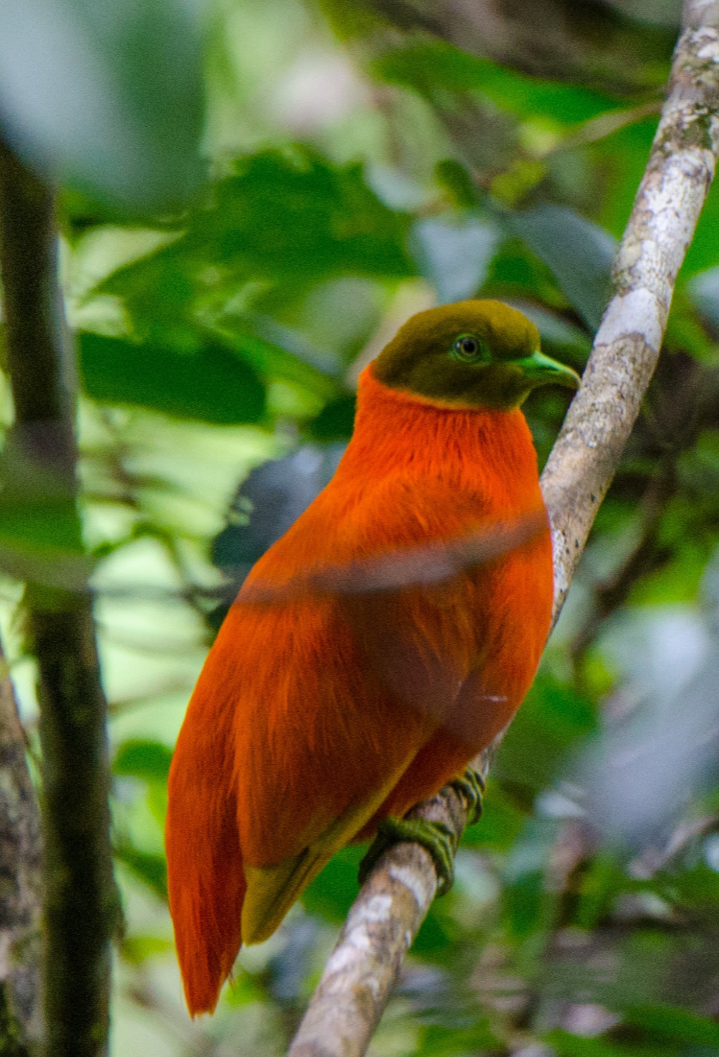
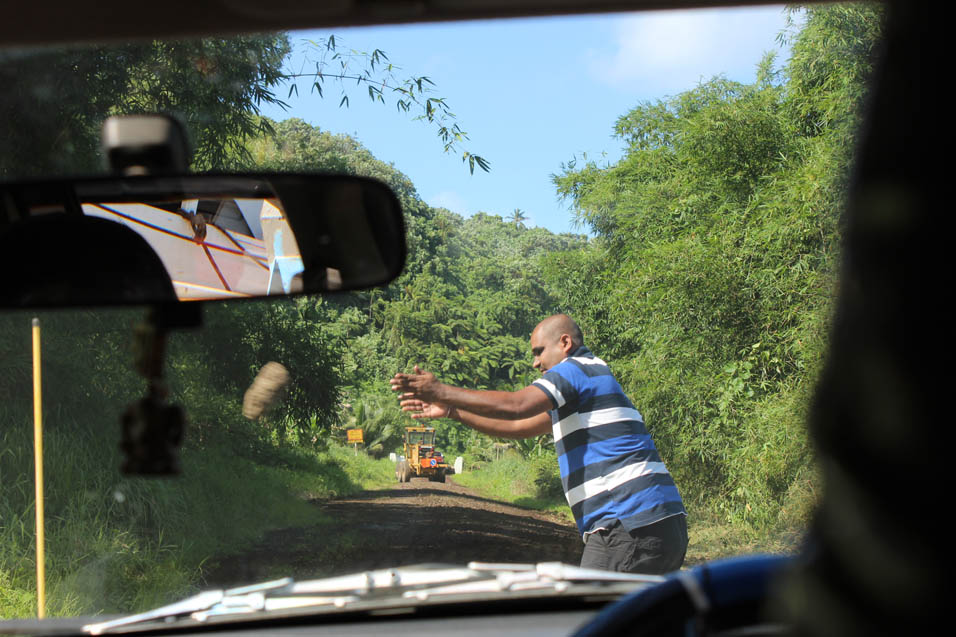
Tavoro Falls
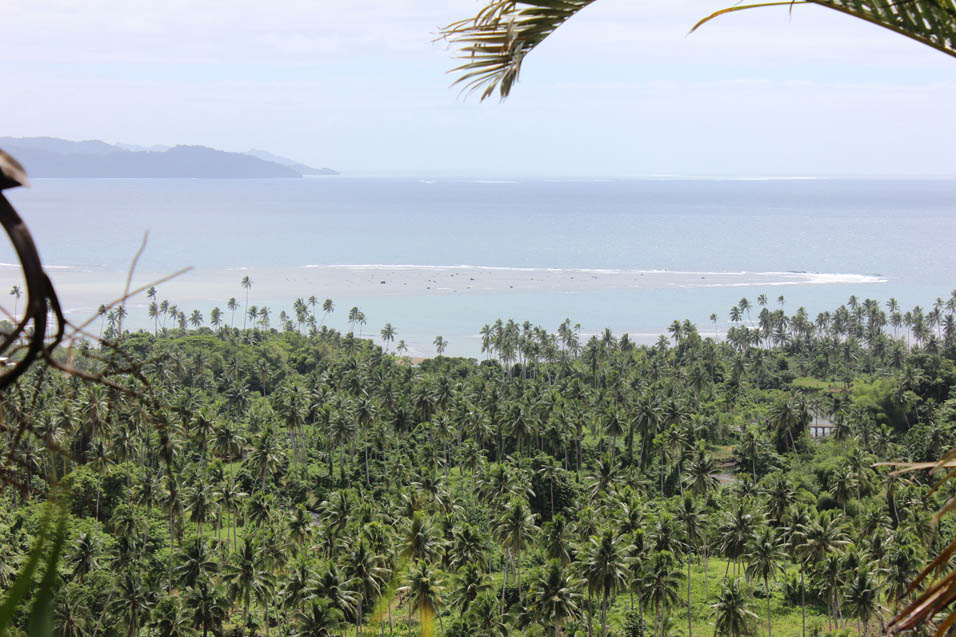
One of the other parks on the island had a set of three waterfalls, along the same stretch of rocky, dirt road called Tavoro Falls. The 10 minute walk to the first fall was one popular with newlyweds, where they “trashed the dress,” and the couple jumps into the clear blue water off a ledge. We happened to catch a photo shoot when we arrived.
The 1000 steps to the next set of falls had us out of breath with knees aching. We didn’t even make it, opting instead to sit on large rocks next to a clear stream, which ended up making the whole trip worthwhile.
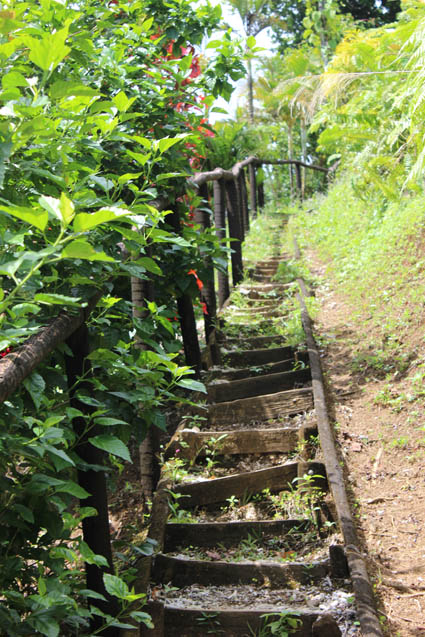
First, a toad appeared as we watched a crayfish in the water. And then, like magic, a purple crab showed up on a rock right next to us. I had seen a picture of it on Trip Advisor and had searched at the first falls for it. It was as curious about us as we were of it and was a great subject for photos. At one point, it mistook Andy for a rock and climbed up on his knee. I kidded that it must be a she crab and found out later that it was (only the purple ones are females).
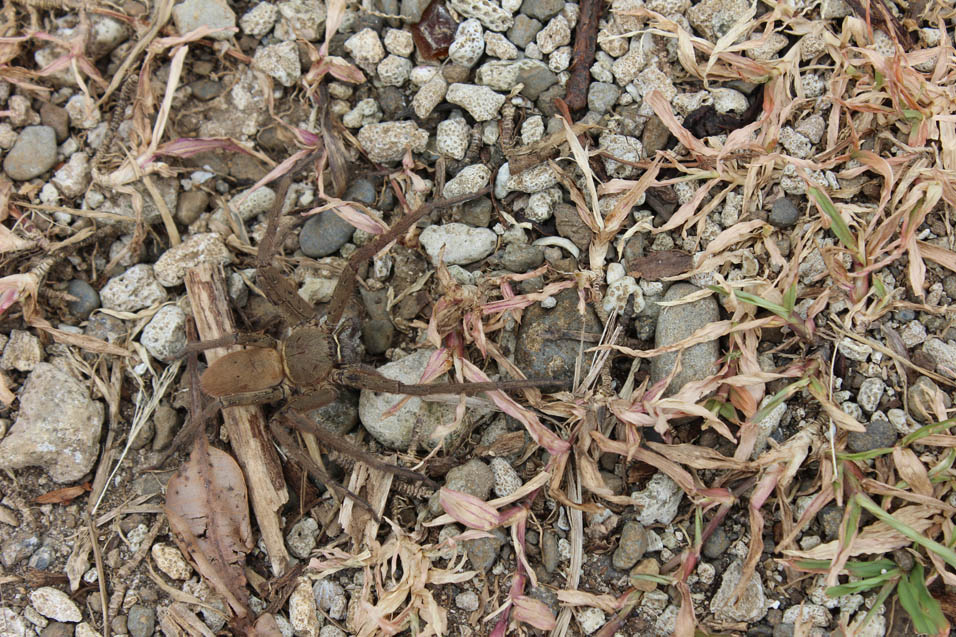
Now, about those pearls
There are two famous companies in Fiji that sell these brilliant pearls — J. Hunter and Civa. A Civa shop happened to be right down the street from us. Trying to decide which ones to buy wasn’t an easy task. One was for a friend and two were for me. I ended up buying two more at the airport and a freshwater pearl bracelet. One of them, a gold pearl, which was from Tahiti. It’s the rarest colour of all pearls and in high demand. I love it.
It takes no less than two years for these pearls to form and the colour is made possible by two things; the nutrient rich waters in this area and by the oyster itself. When the implanting process happens, sometimes a bit of the inner shell is taken in order to help with the final colour. An expert is called in to surgically implant and remove the final product. The oyster is not harmed during either.
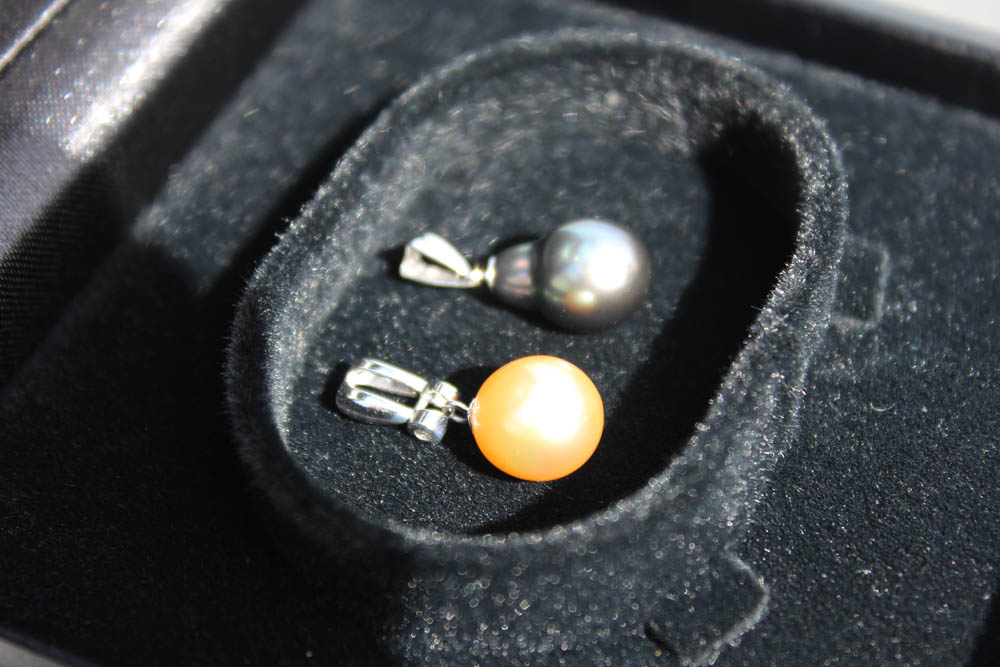
The Poison Tree
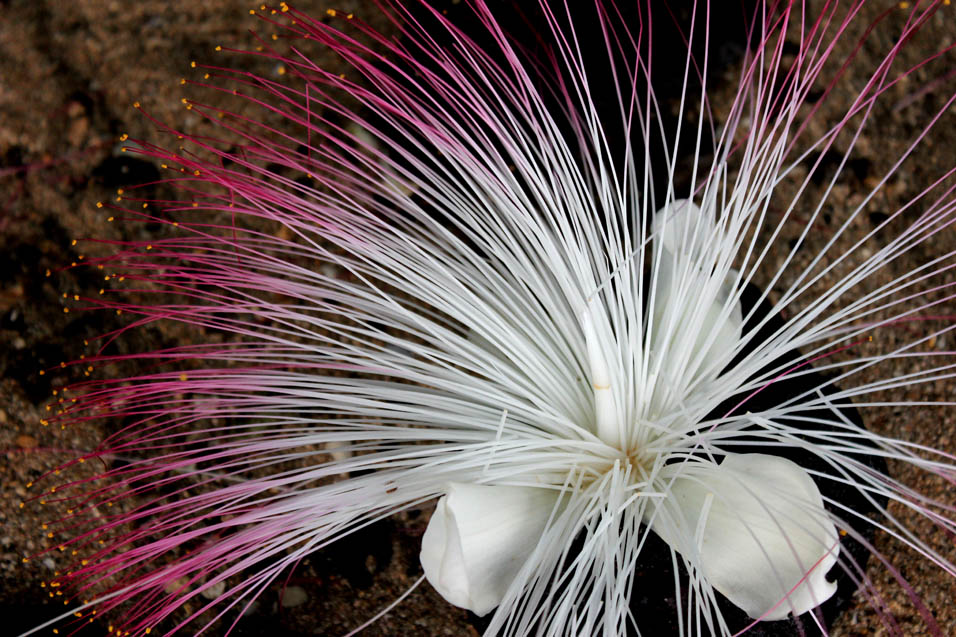
On our first beach walk in the morning, we came across a tree that looked like a tropical almond, but had the most beautiful white and pink flowers. They reminded me of a huge mimosa. All of them had dropped onto the black rocks and made for some great shots. I later found out that it’s called a Poison tree because everything on the tree is in fact, poisonous. The seed inside the gorgeous wooden pod can be ground up and used in the water to stun or poison fish to make them easier to catch. These have a “sickly” sweet smell at night and attract bats and moths.
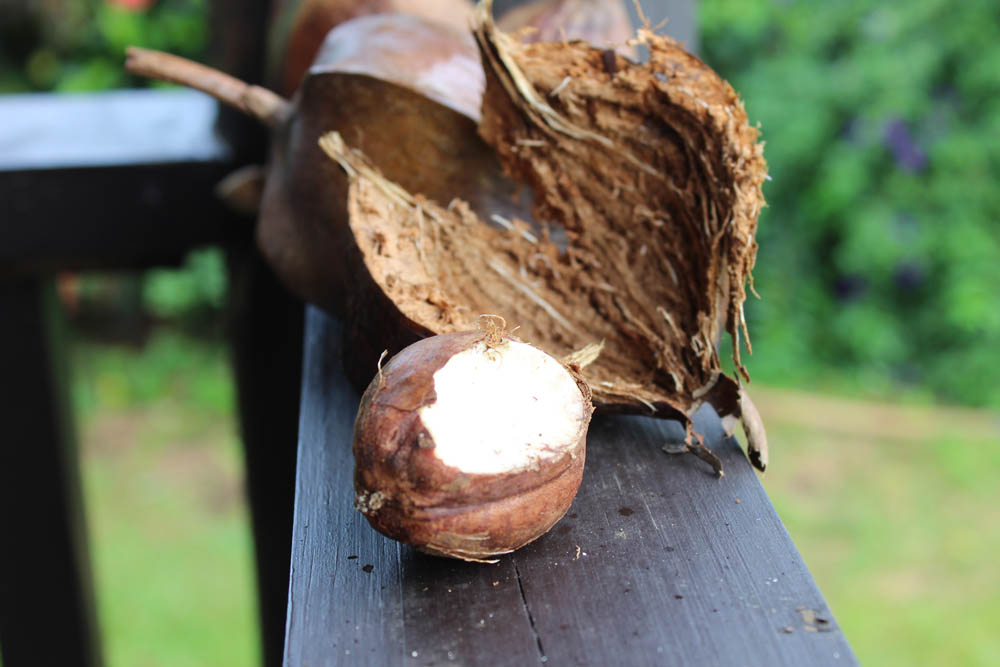
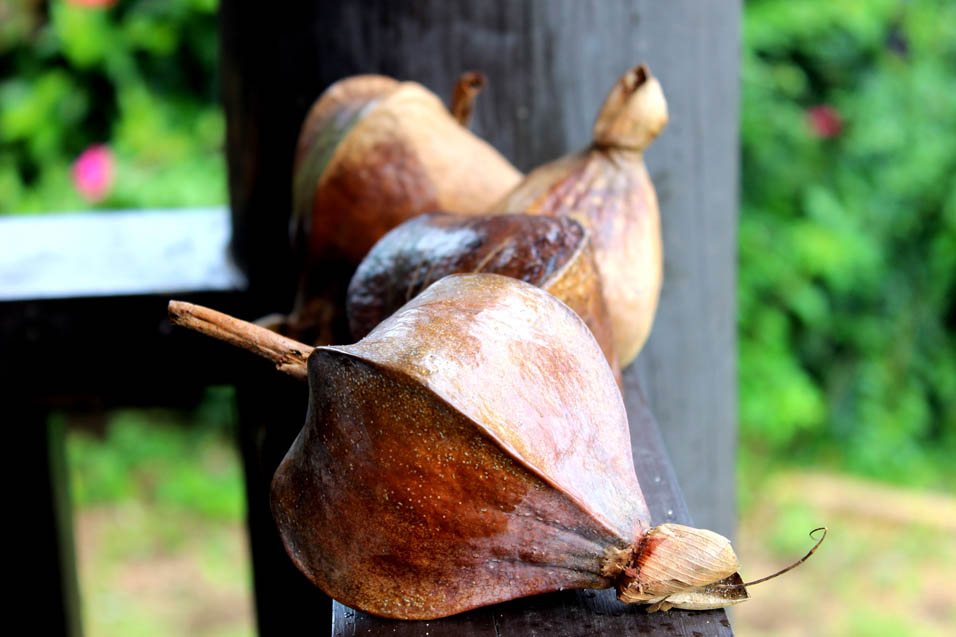
Because the tide came in early, I kept missing another chance to photograph them. That is, until two days before we left. It was a calm morning with the sun coming up and some of the flowers were floating in the water, slowly being pulled out to sea. The sight was peaceful and sad at the same time. It felt like I was mourning a death.
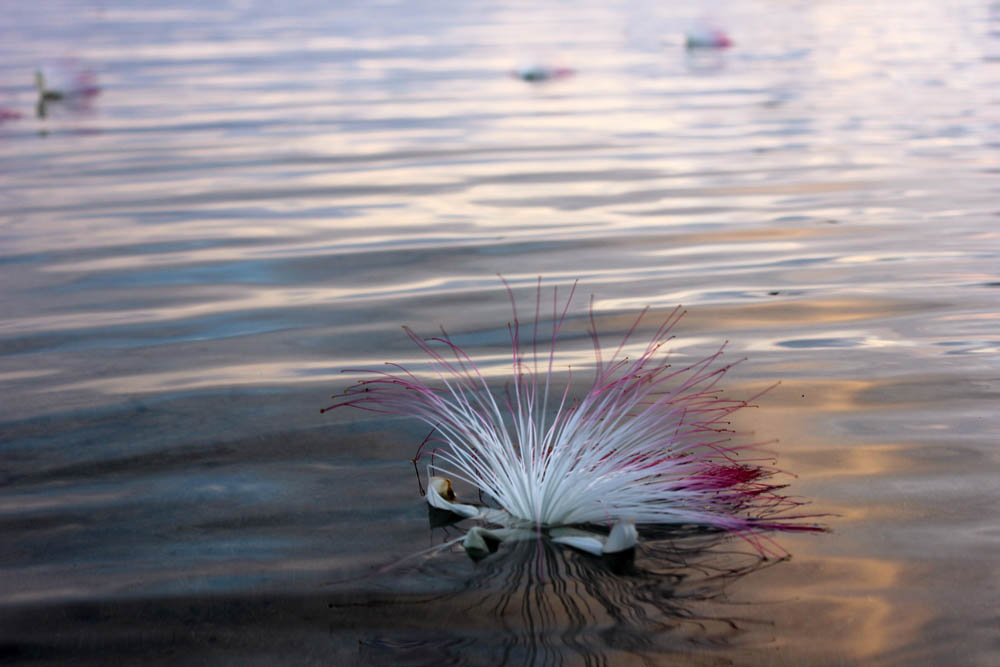
Diwali
Fijians are comprised of indigenous people, coming from an area known as Melanesia as well as Indians, who had been brought over as indentured servants. We were fortunate to be invited by our caretaker to his family’s Diwali celebration, which is a festival of lights.
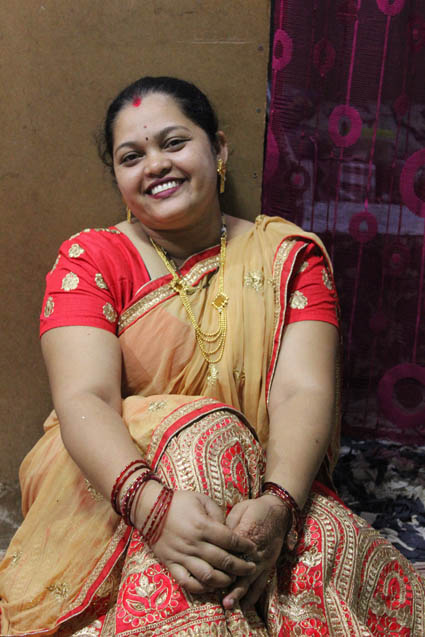
We had been cooked a traditional Indian meal along with sweets for dessert and a fireworks display that went on for almost two hours. Many people from Taveuni came by to pay their respects and drink kava.
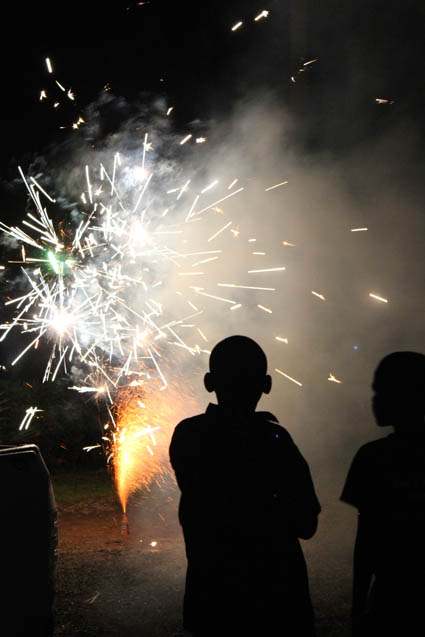
Town
We only ventured into town once so we could see the International Date Line, the Wairiki Catholic Church and the ATM machine. Oh, and the post office. Should you need to find some postcards to send, good luck! I was able to find some old ones at Tavoro Falls and at Coconut Grove. Be sure to take them with you because that’s the only place you can mail them from and only when they’re open. There were no souvenir shops there but the small shops that were there had just about everything one could need (postcards are not a necessity for the locals!).
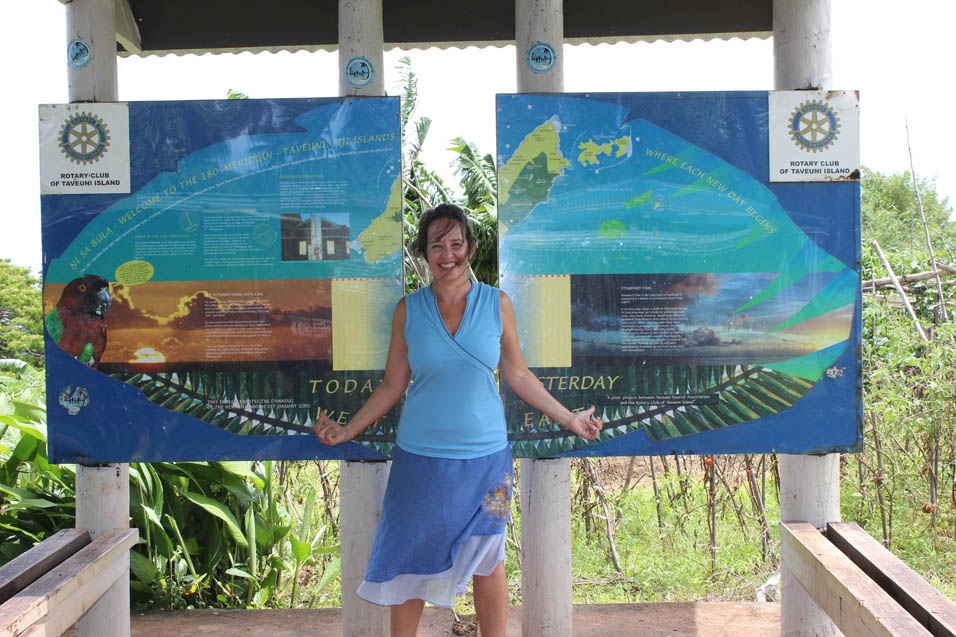
The fruit and veggie stands in town won’t have bananas, papaya or mangoes because every household seems to grow them. You will find long beans, pineapples, cucumbers, lettuce, carrots, tomatoes and fruit like pineapple, passion and jackfruit.
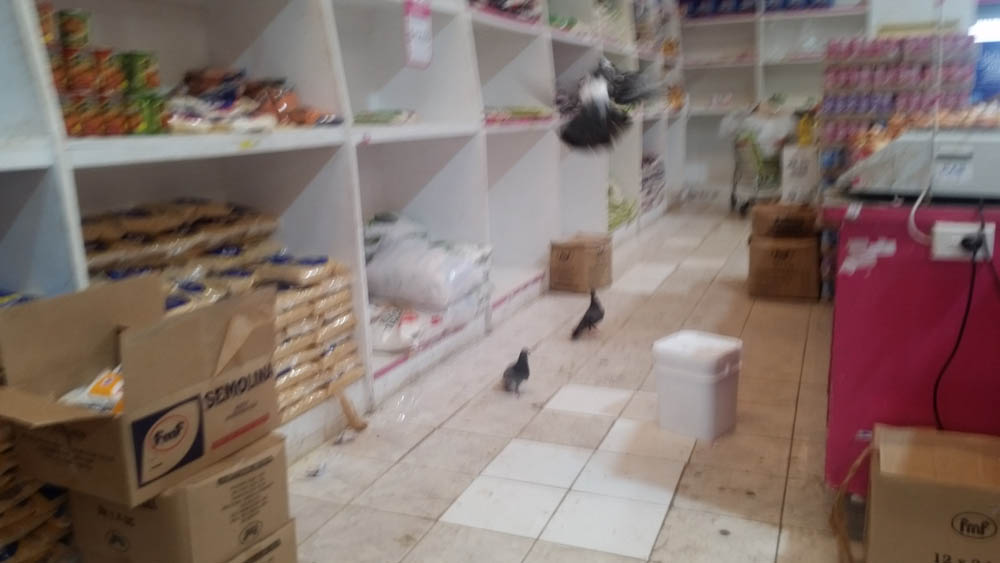
There wasn’t a lot to see in town, but there were some funny sights like a single bookcase inside of an electronics store that had ‘Bed Bath and Beyond’ on it and stuffed with colourful rolled up towels. There were pigeons inside of the grocery store cleaning up some grain on the floor. Then there was the Dateline Hotel. No comment needed.
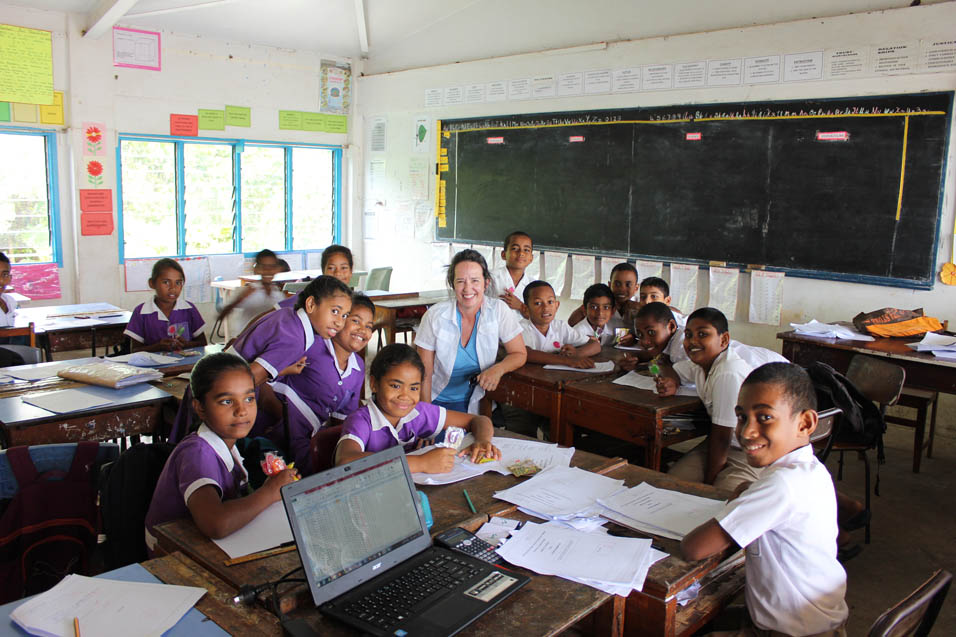
We also dropped into Jass’ son’s school real quick to bring some treats and I was able to hand out some of the stickers, temporary tattoos and pencils I had brought with me. Doesn’t seem to matter where in the world you are…all kids love stickers and tattoos! Take some with you next time you go to an out of the way place and watch their faces light up.
Jungle Walk
Our next to last day got us out with Baba, a local birdwatcher. I had wanted to see the orange dove but the weather just wasn’t cooperating. When I brought up the fact that I wanted to see a snake (or three or four), he knew where one was hanging out.
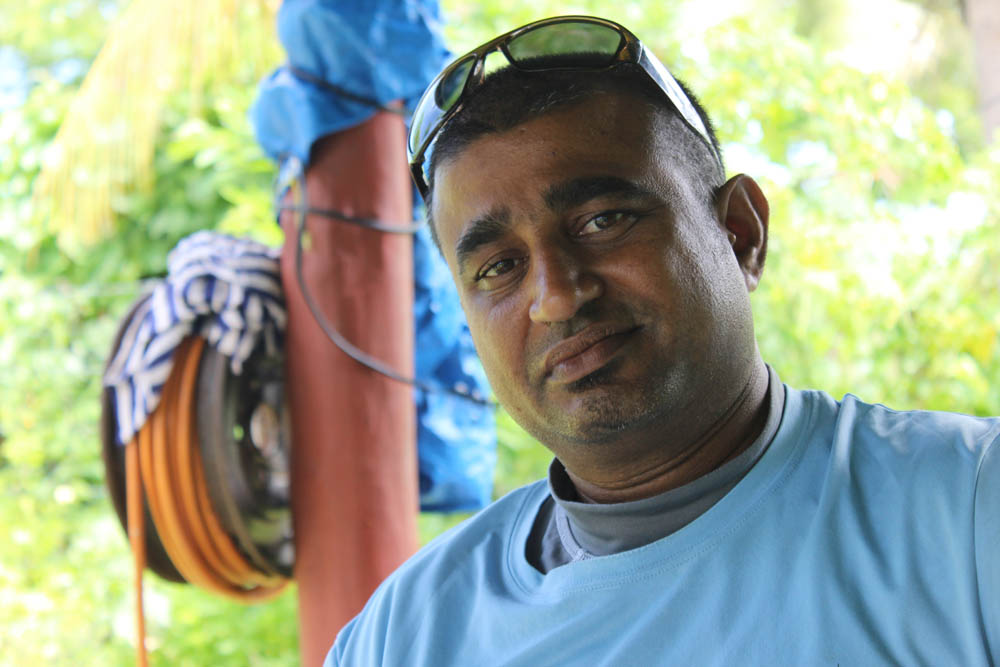
We headed back toward town and up a dirt road where the snake was still sitting in the tree fern. Unfortunately this was as close as we could get (that’s a zoom on the camera) and couldn’t see his face. I’ve never seen a boa this black before.
We headed up the road and once we got to a point, I looked back to see the rain over the ocean.
It was way too quiet which told me it was about to pour and we hardly saw any birds (or heard them). Plenty of huge spiders, though!
We had passed by some farmers that Baba spoke with and then it started to rain. We headed back and luckily, the guys offered us a lift back to where Baba had parked. I’m SO glad we didn’t have to walk back because we had gone quite far and now the trail was a small muddy river. We hung out at the house for a little while and watched it come down.
Baba took us to his family home where his mother and sisters had prepared us a lovely meal of fish curry, soup, greens and roti.
It was a very enjoyable 13 days and even though that’s a lot more time than most spend on this particular island, it seemed like the perfect stretch to us. I’d like to return to Fiji, but to a different island next time so I can see more wildlife. The people were kind and generous and safety was never a concern. Thanks to everyone there who made us feel at home and welcome on their beautiful island!

